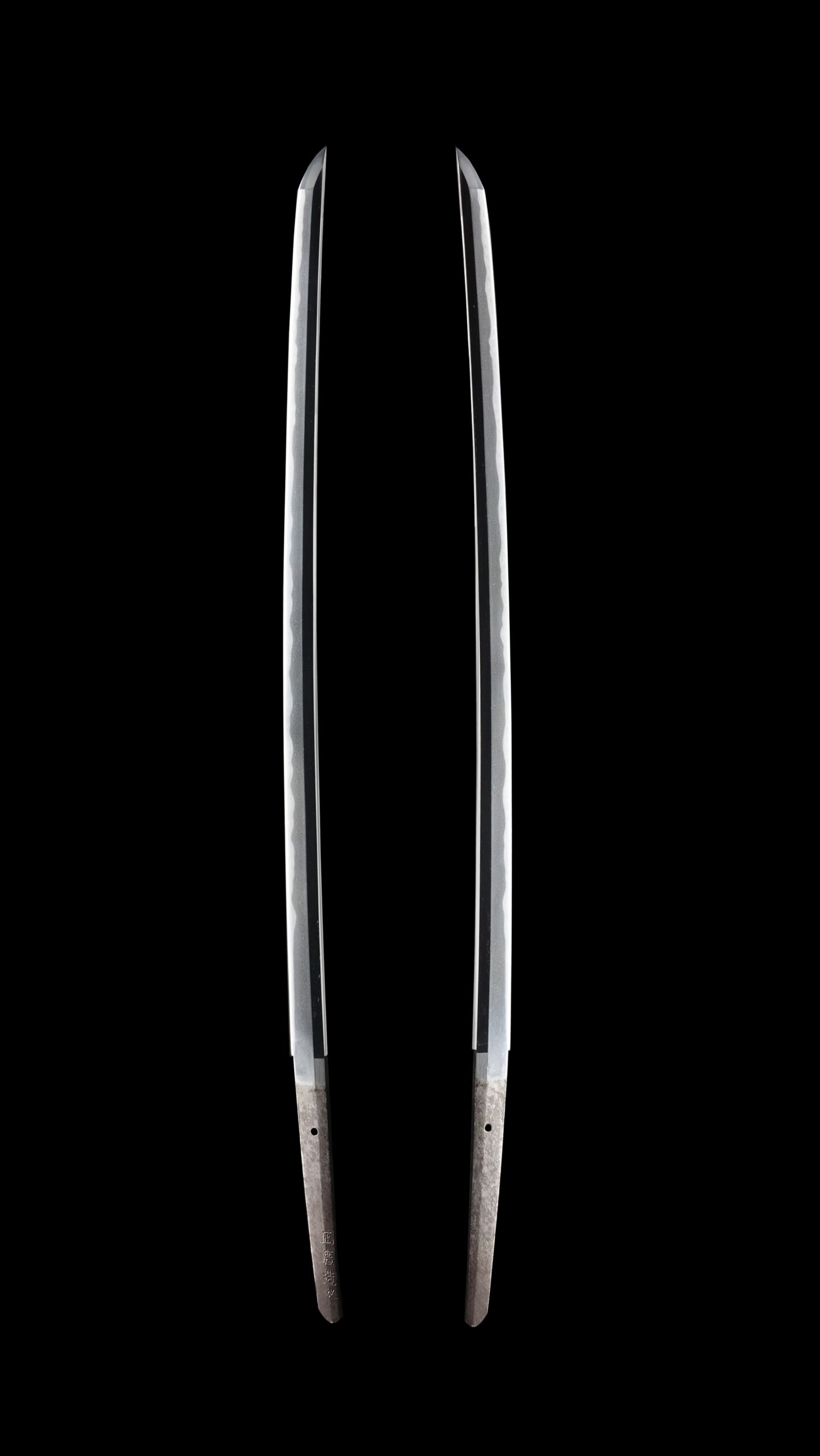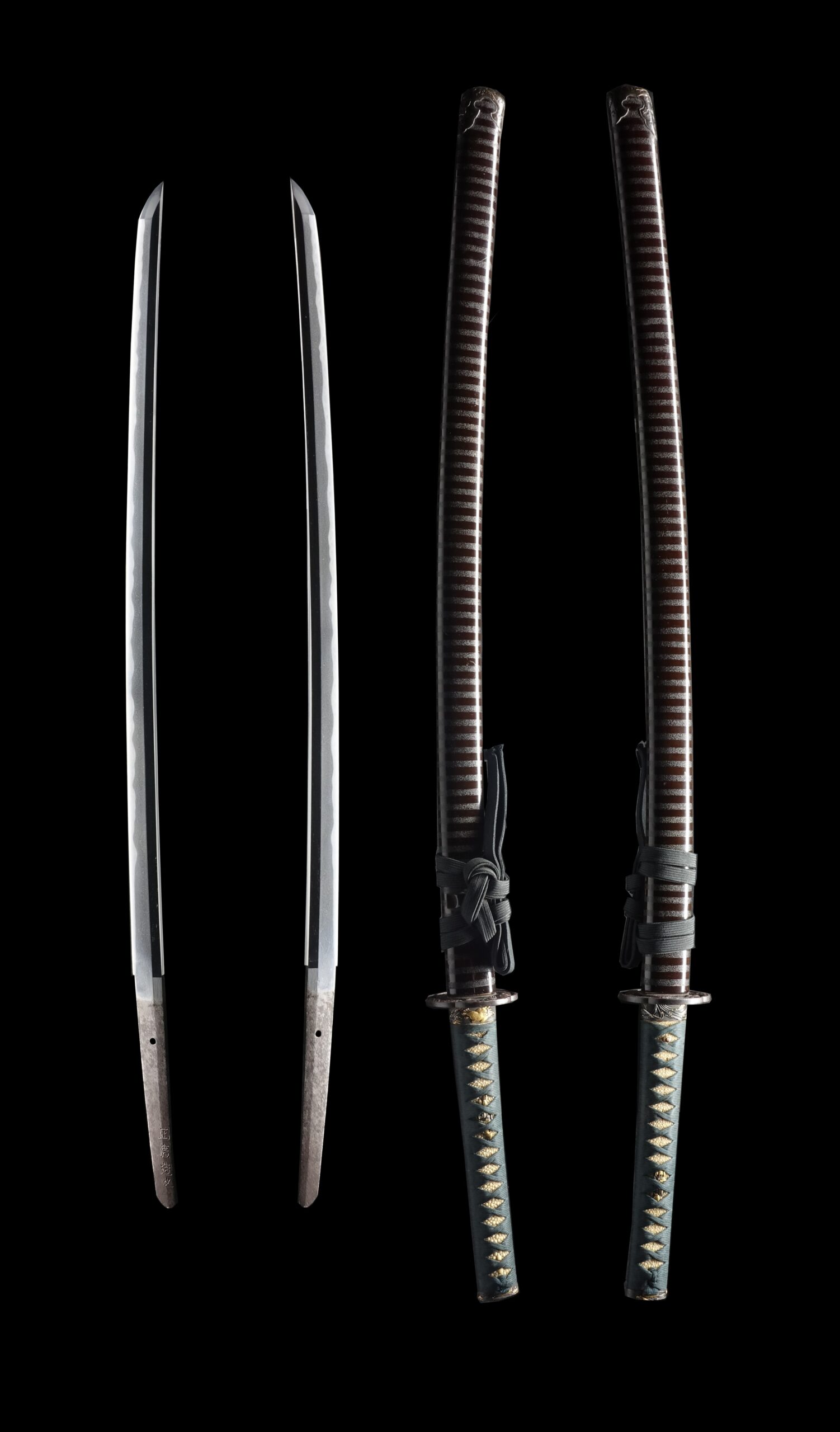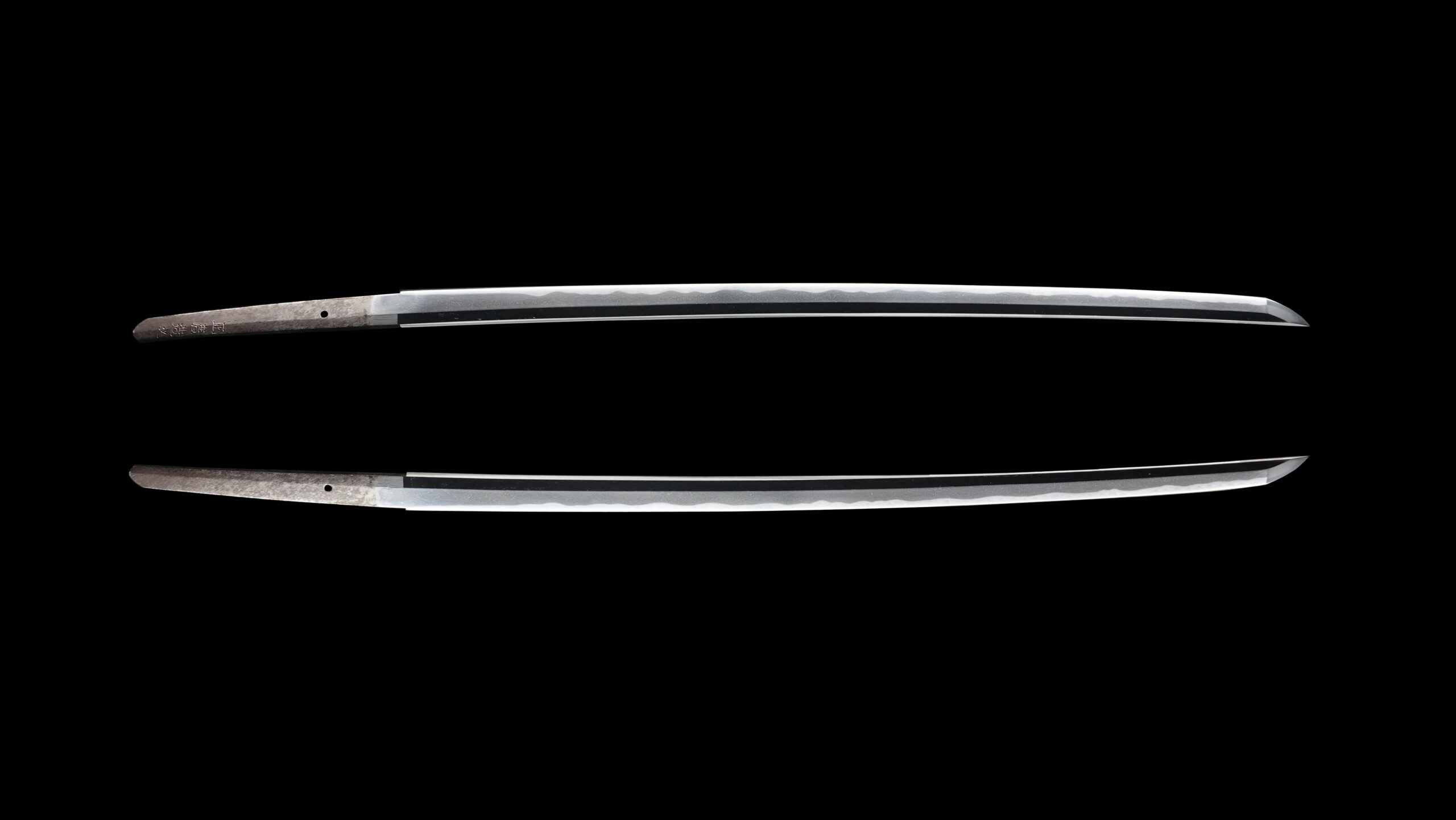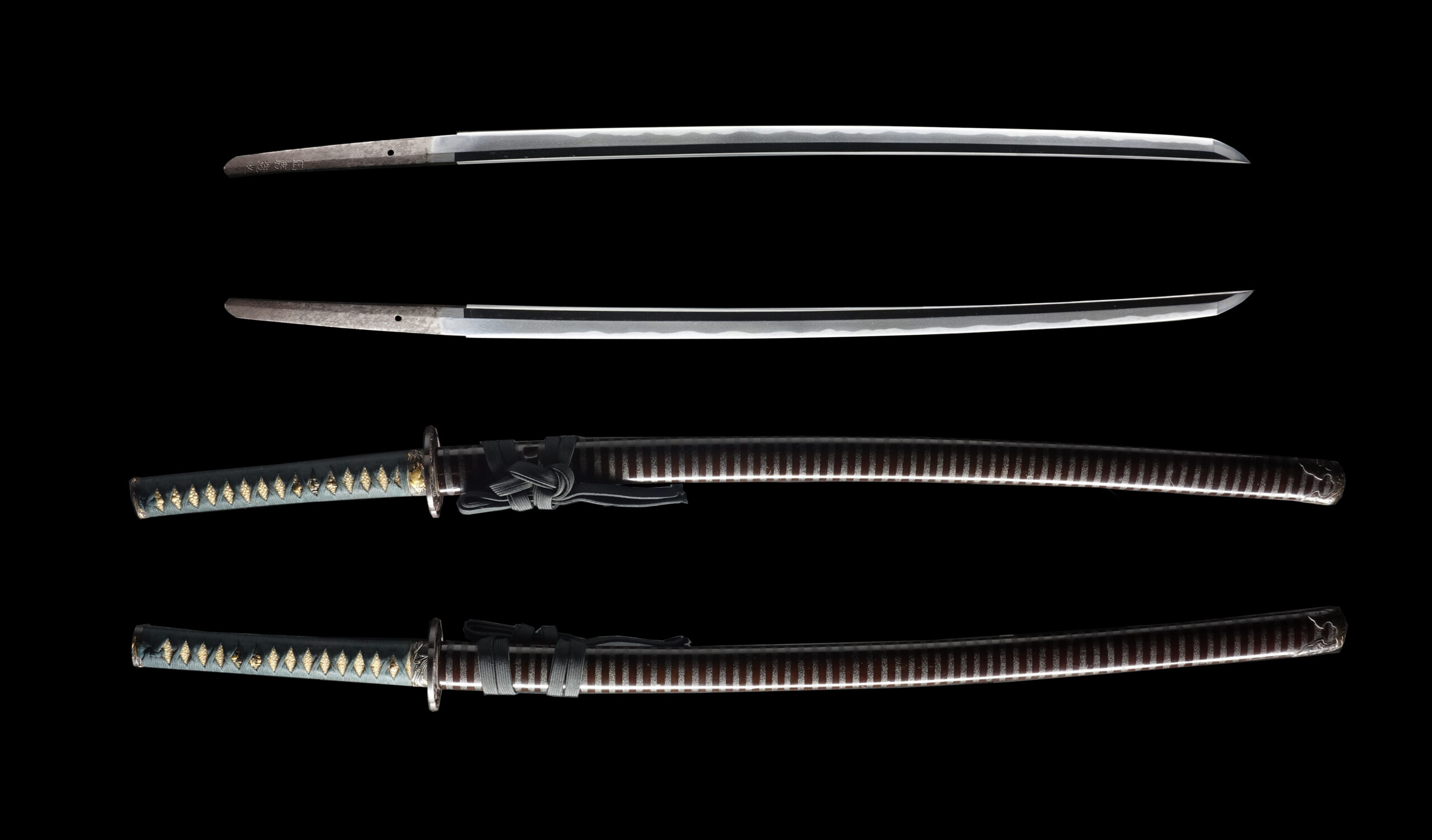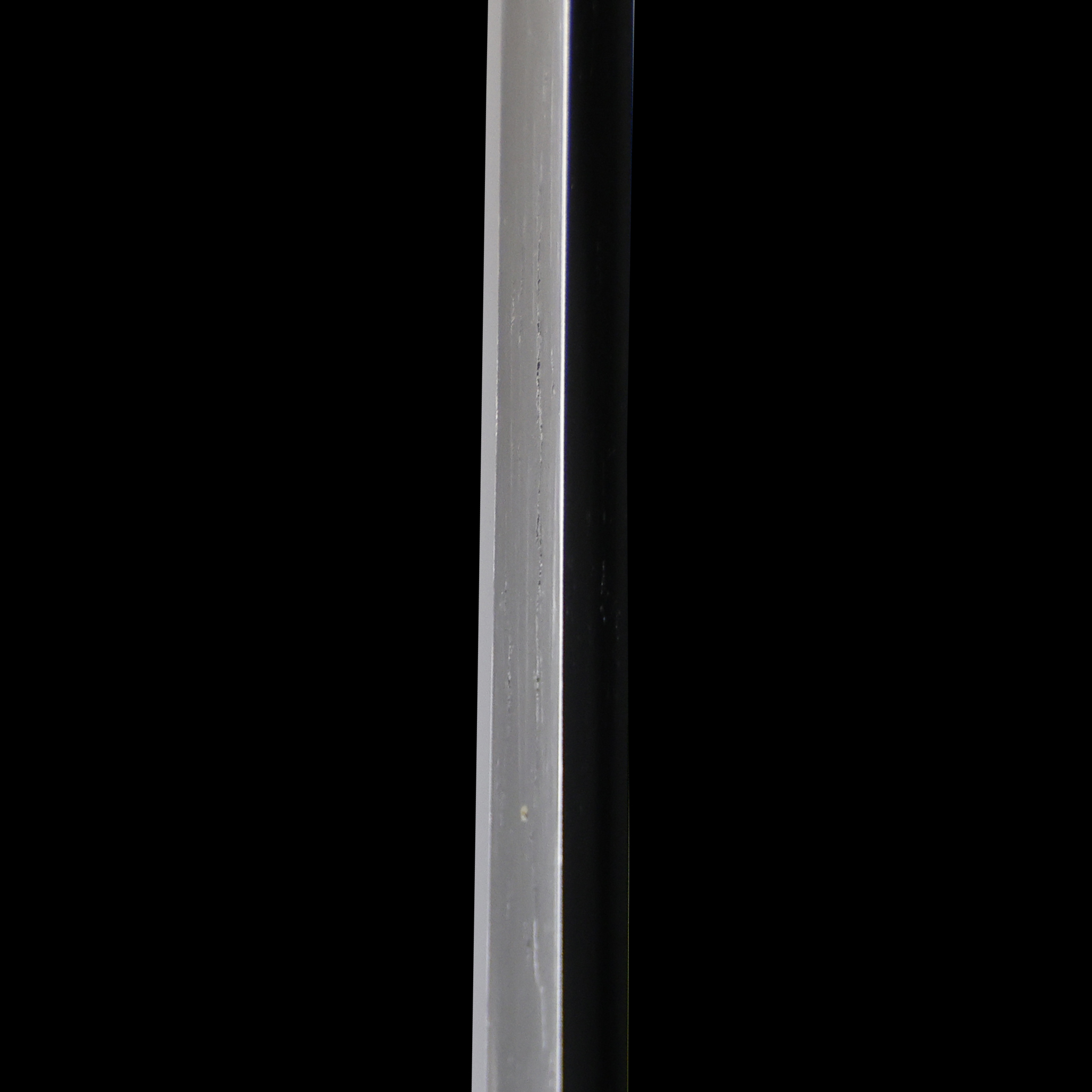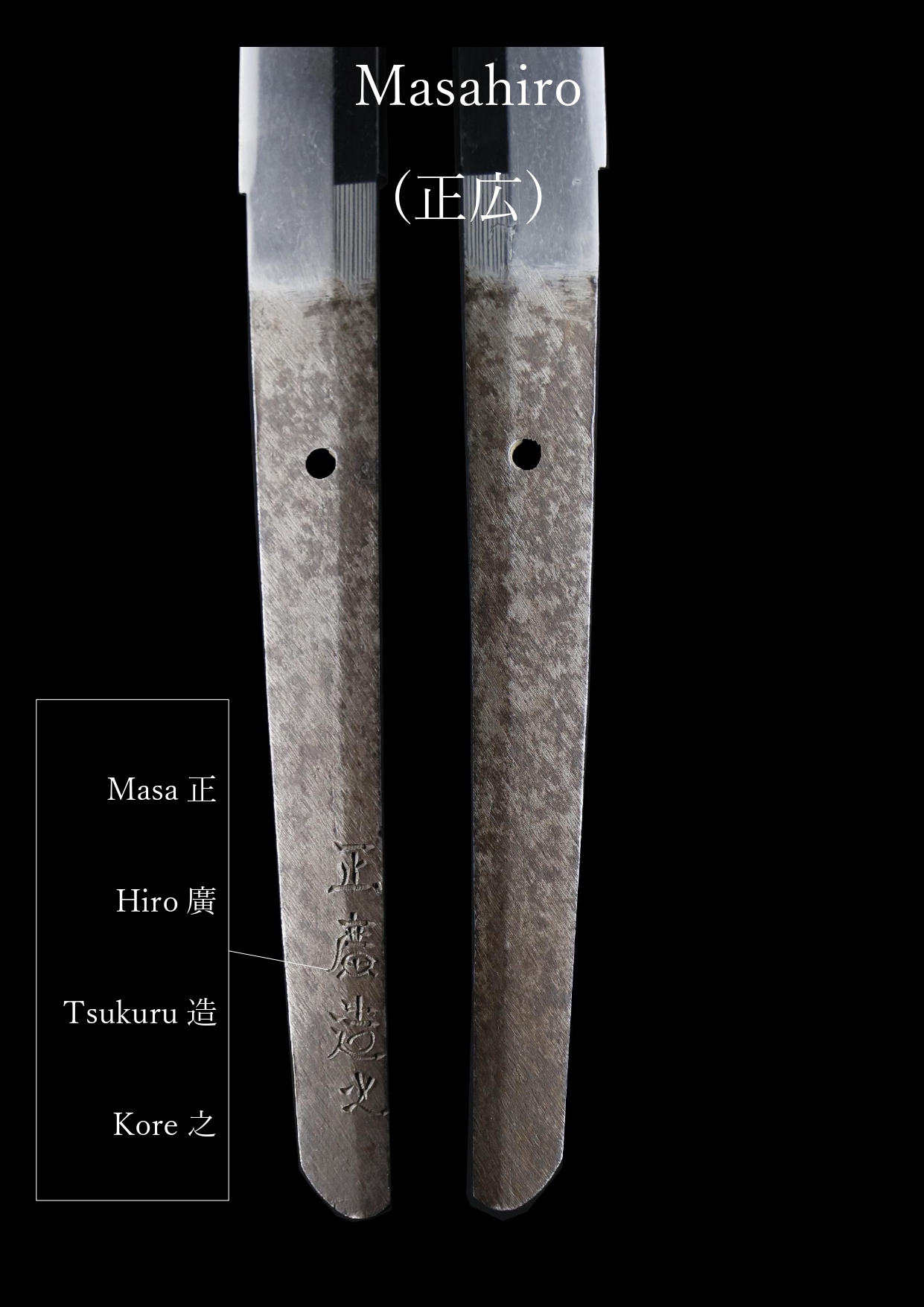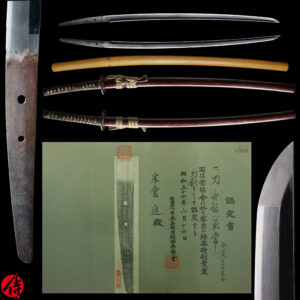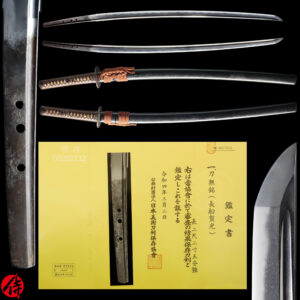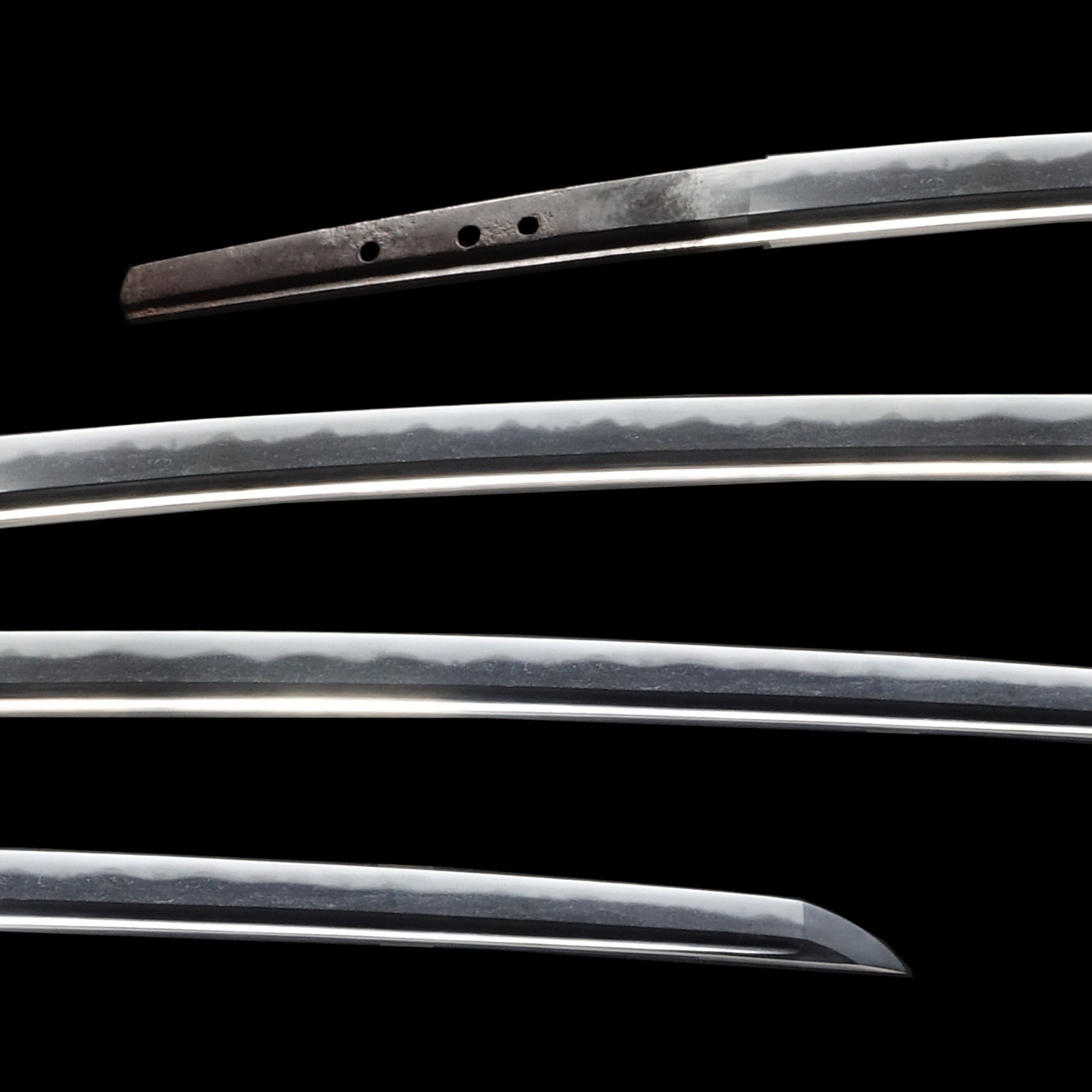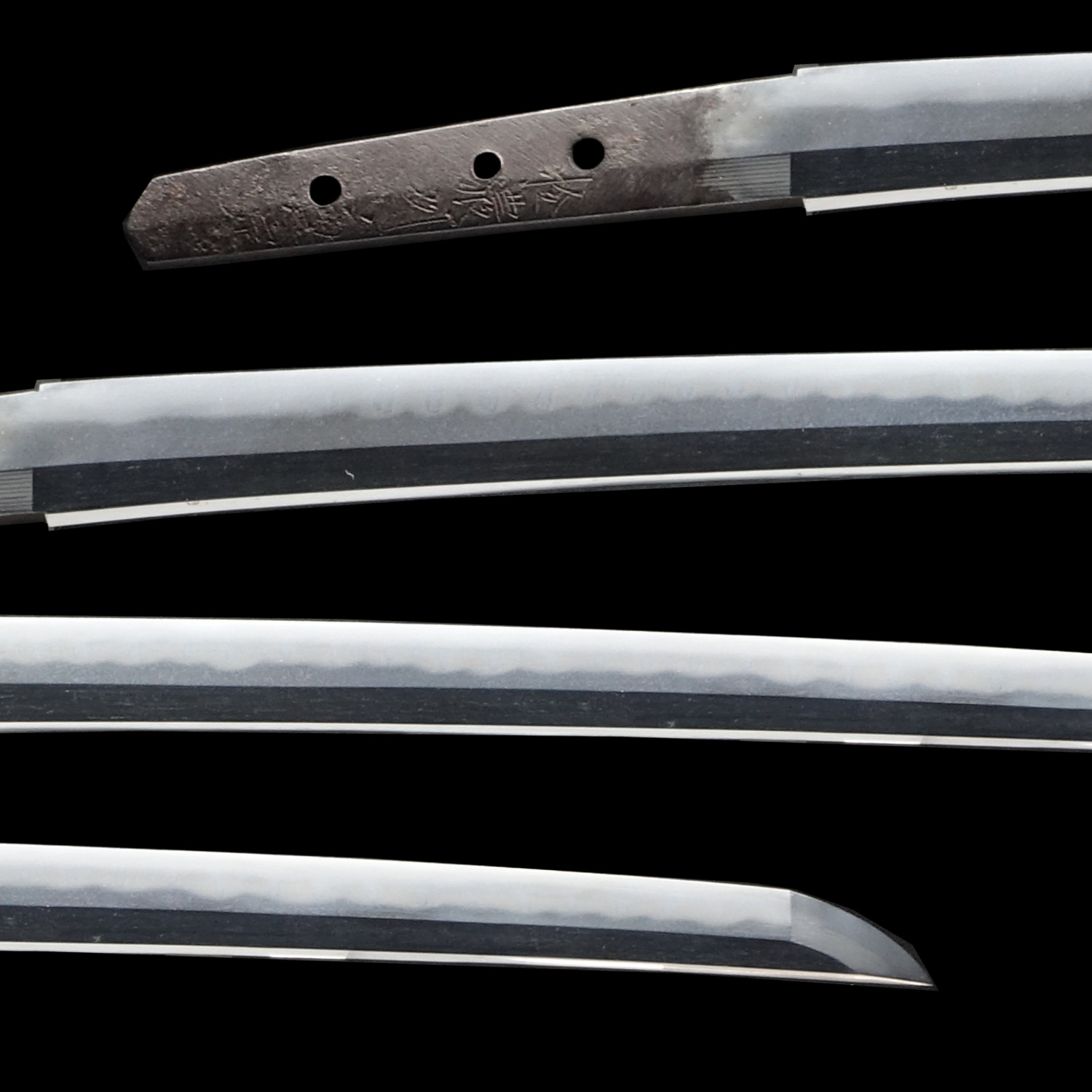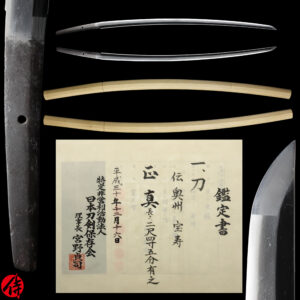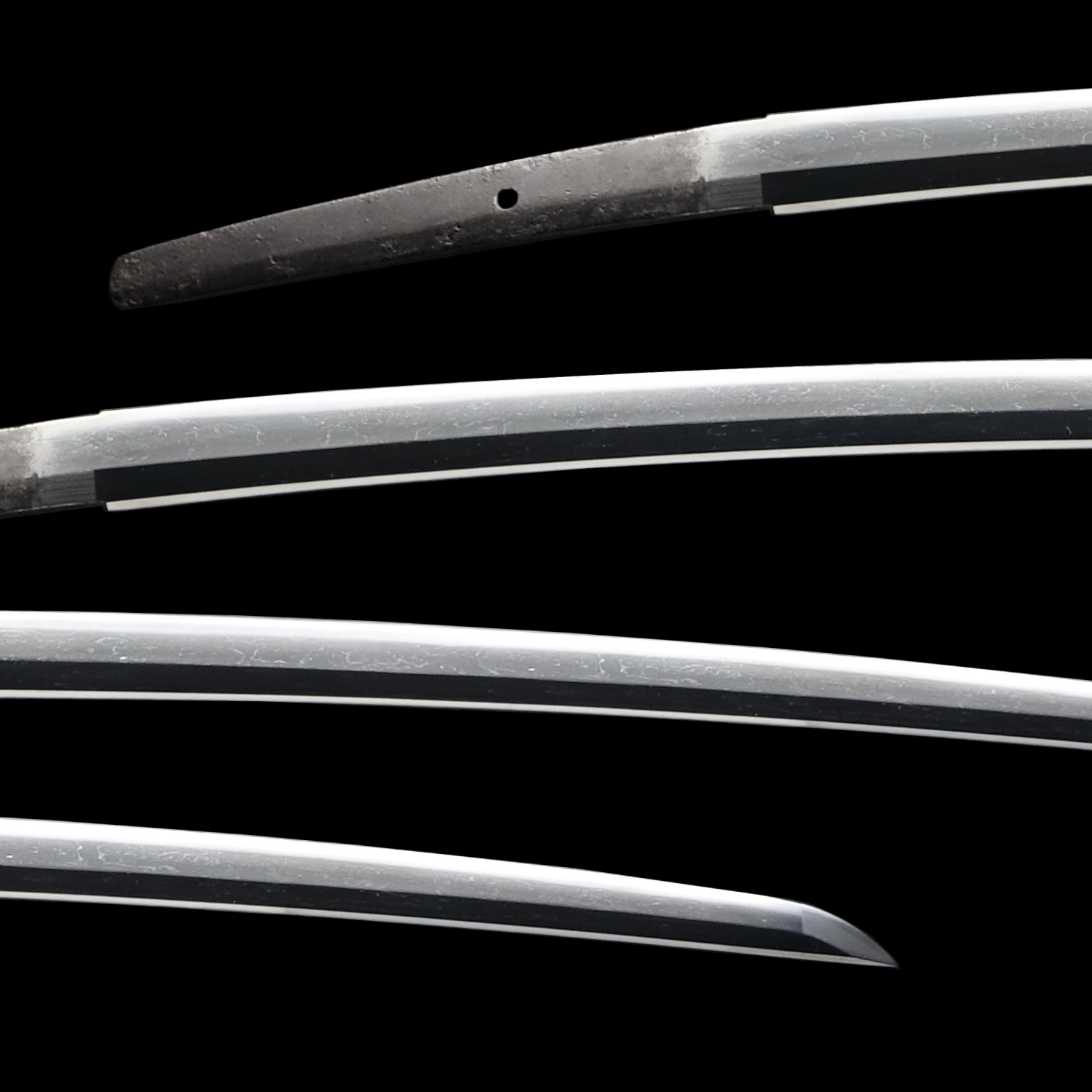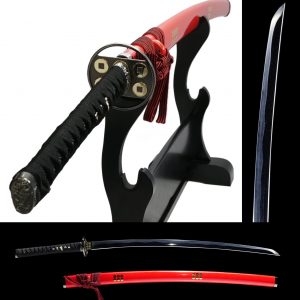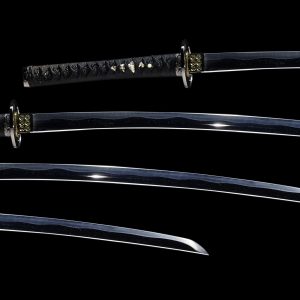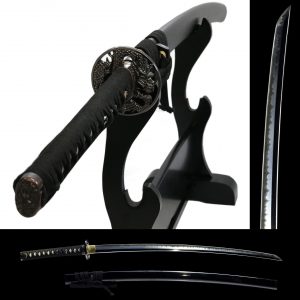Antique Japanese Sword Katana Signed by Masahiro with NBTHK Hozon Certificate
【Description】
According to an appraisal by the NBTHK (Society for the Preservation of Japanese Art Swords), this blade was forged by the swordsmith Masahiro (正広) during the Ansei era (1854–1860), in the late Edo period, in Bingo Province—which corresponds to the eastern part of present-day Hiroshima Prefecture.
Masahiro was a regional swordsmith who was active in the final years of the Edo period. The Ansei era was a time of political upheaval leading up to the Meiji Restoration, during which the demand for functional swords—especially among the warrior class—rose sharply. It is believed that Masahiro focused on producing blades suitable for actual combat in response to the needs of this turbulent era.
In Bingo province, many lands were owned by politically powerful temples of the Yamato region (today’s Nara prefecture) from ancient times. And many Samurai formed military groups to protect those lands, being hired by temples. And quite a few swordsmiths moved from the Yamato region to the Bingo region to forge blades for those Samurai.
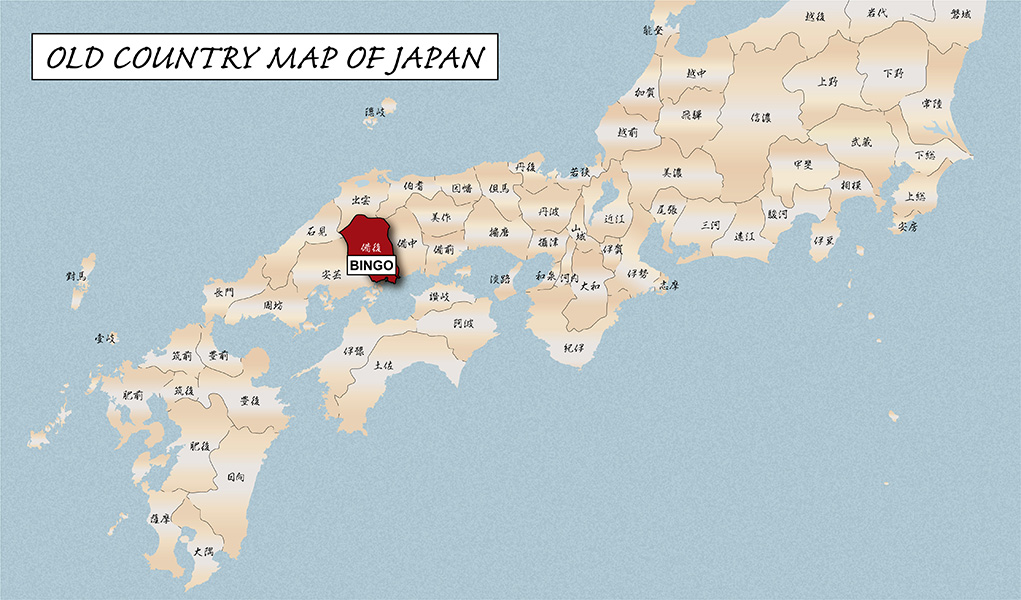
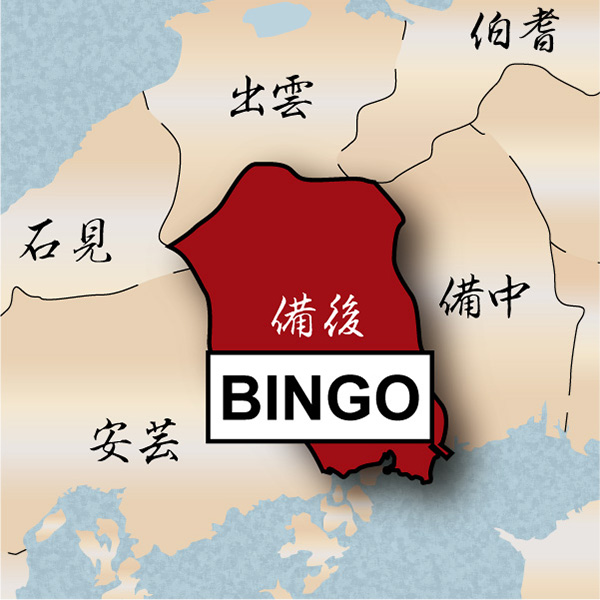
About the Late Edo Period (Bakumatsu)
The Bakumatsu period refers to the final phase of Japan’s Edo period, generally dated from 1853 to 1868. It began with the arrival of Commodore Perry and his American fleet, which pressured Japan to open its ports to international trade. This event marked a major turning point in Japanese history, exposing the country to Western technology and sparking nationwide debate about the path Japan should take in a rapidly changing world.
At the time, Japanese society was divided between the conservative factions supporting the Tokugawa shogunate and the reformist groups advocating for modernization and a return to imperial rule. These internal conflicts eventually escalated into civil war, bringing an end to samurai-led governance.
Despite the growing instability, Samurai continued to play a central role in society. Their swords, especially the katana, were more than weapons—they were revered as symbols of honor, discipline, and the very essence of the Samurai spirit.
This blade is appraised as a Hozon Touken (保存刀剣) issued by NBTHK (Nihon Bijutsu Touken Hozon Kyokai: 日本美術刀剣保存協会). This authentication paper was only given to authentic Japanese swords, well preserved and high quality with artistic value.
*Please keep in mind that there is a couple of Kitae Kizu on the Mune (backbone) of this blade. If you like to see the detailed condition, please feel free to contact us.
【Blade】
Cutting Edge Length (Nagasa): 68.5 cm ( 26.9 inches)
Curvature (Sori): 1.0 cm (0.39 inches)

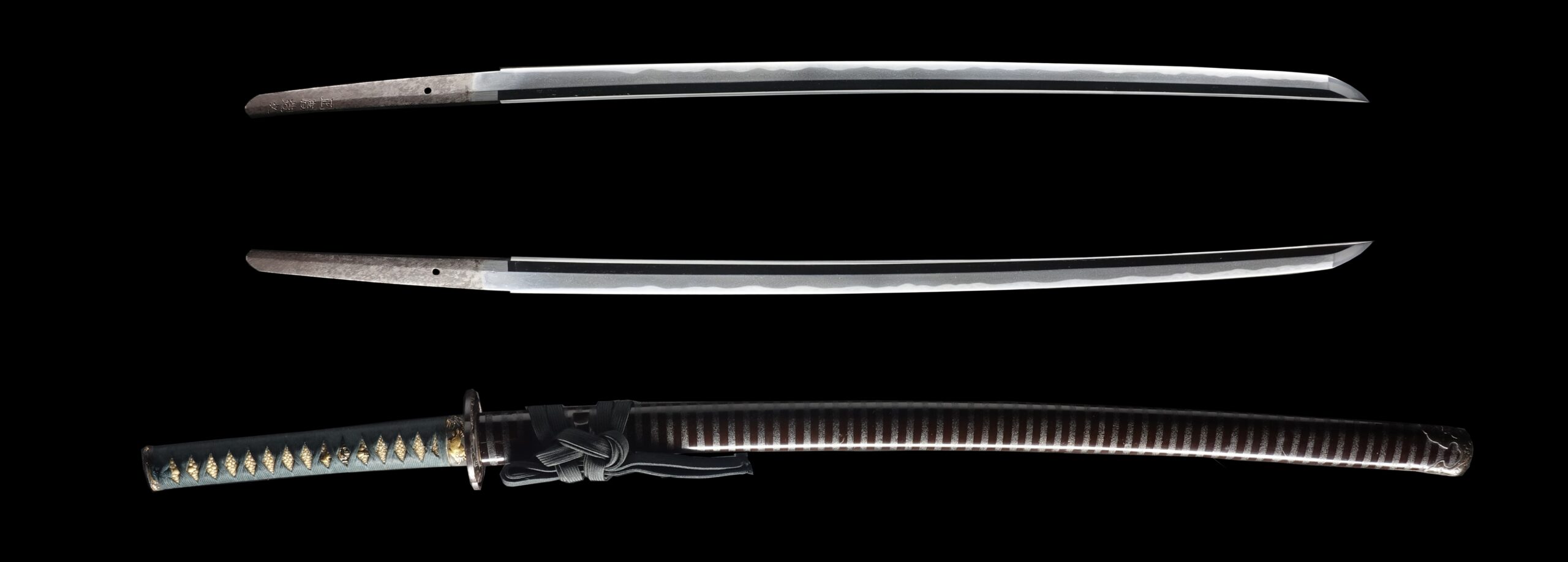
Hamon:
The crystalline structure which forms along the cutting edge of a blade as a result of the hardening process.
Jimon (Jihada):
Visible steel surface pattern created by folding and hammering during forging process.
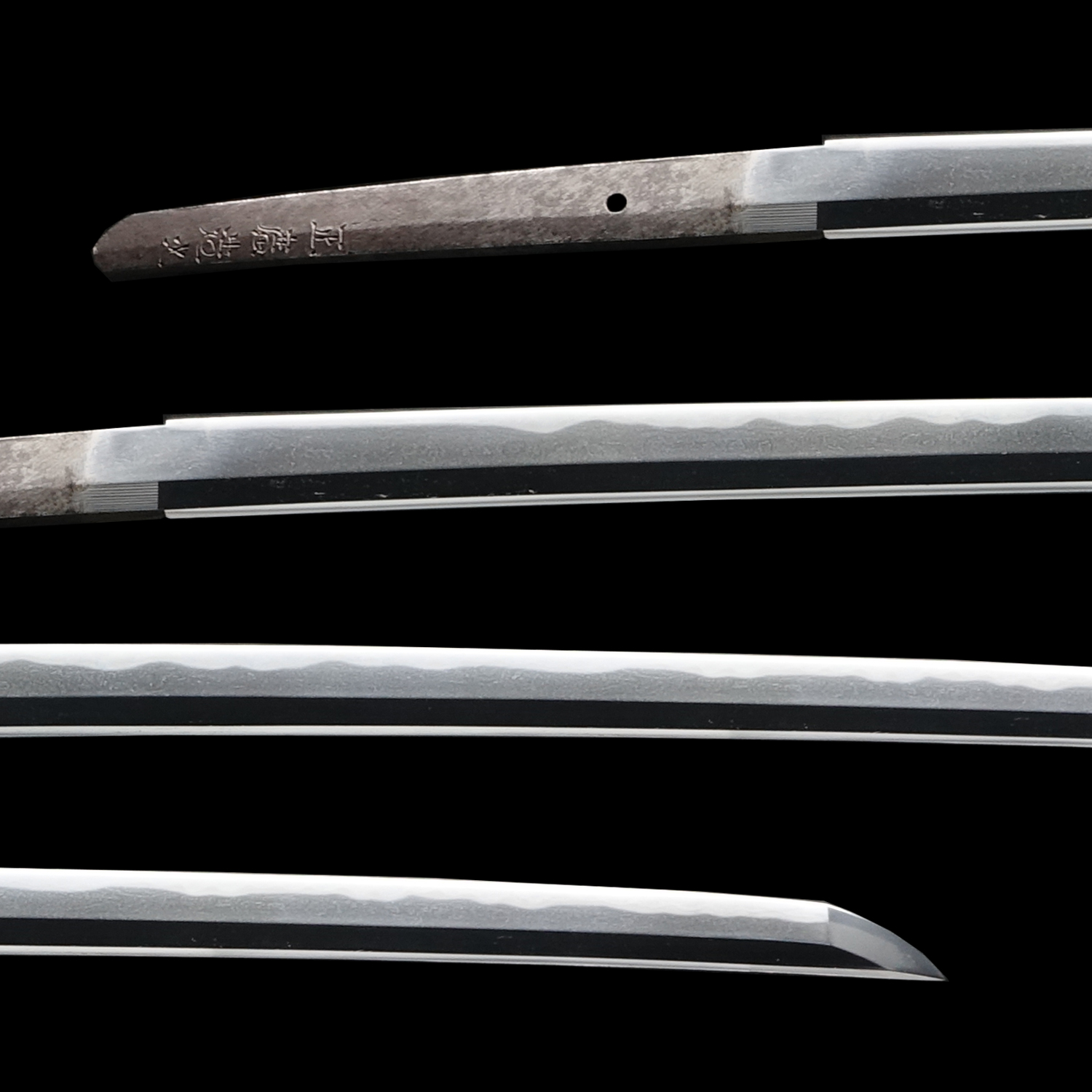
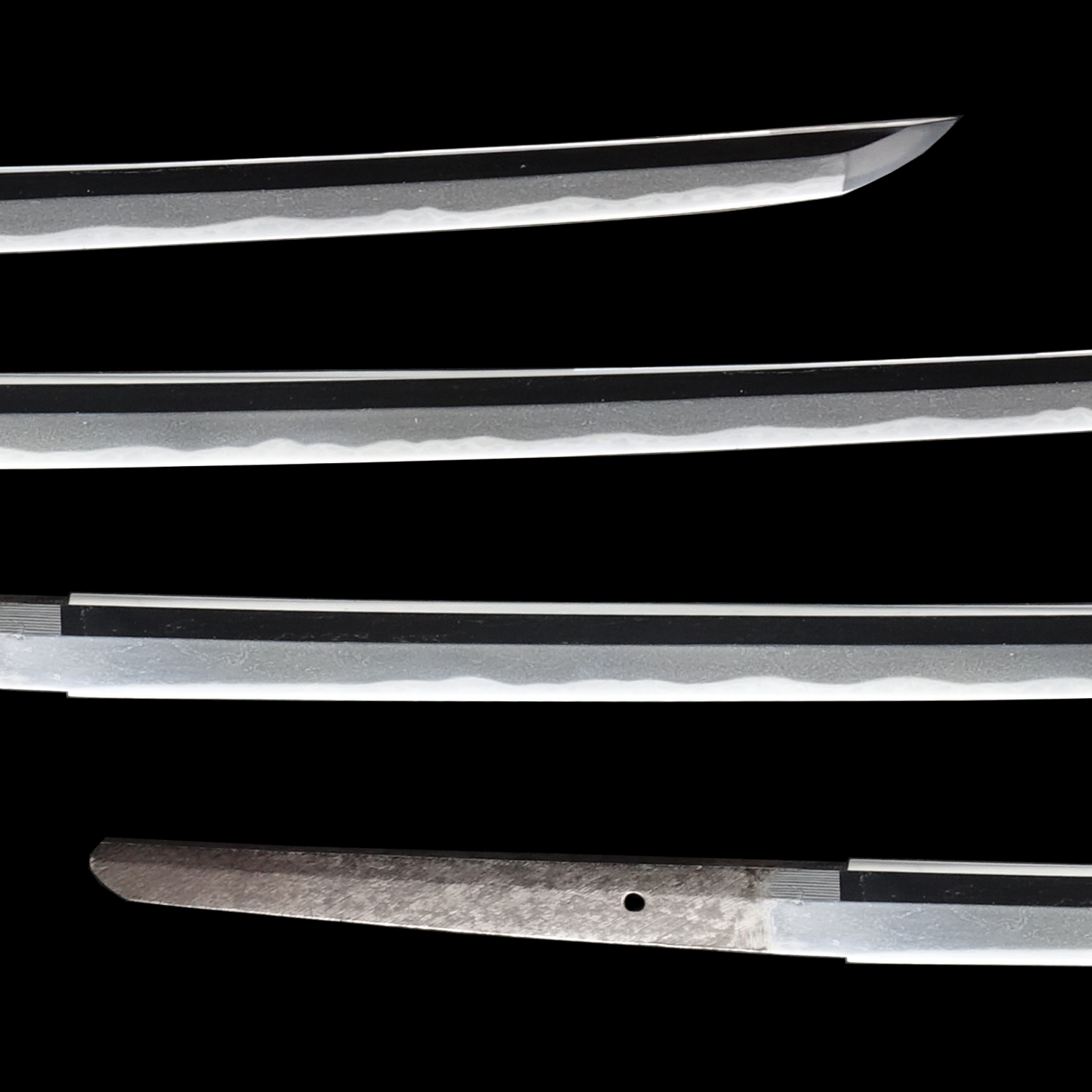
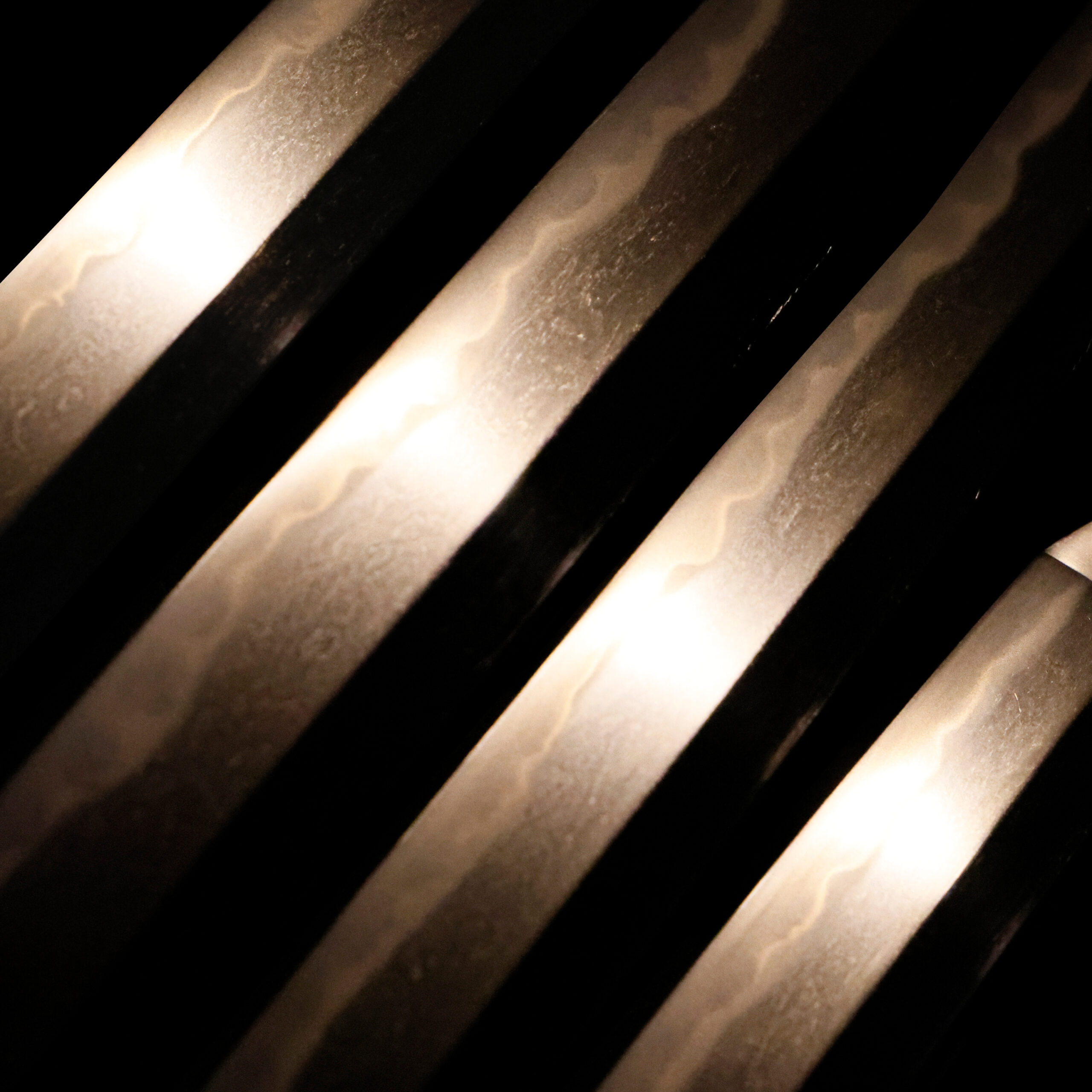
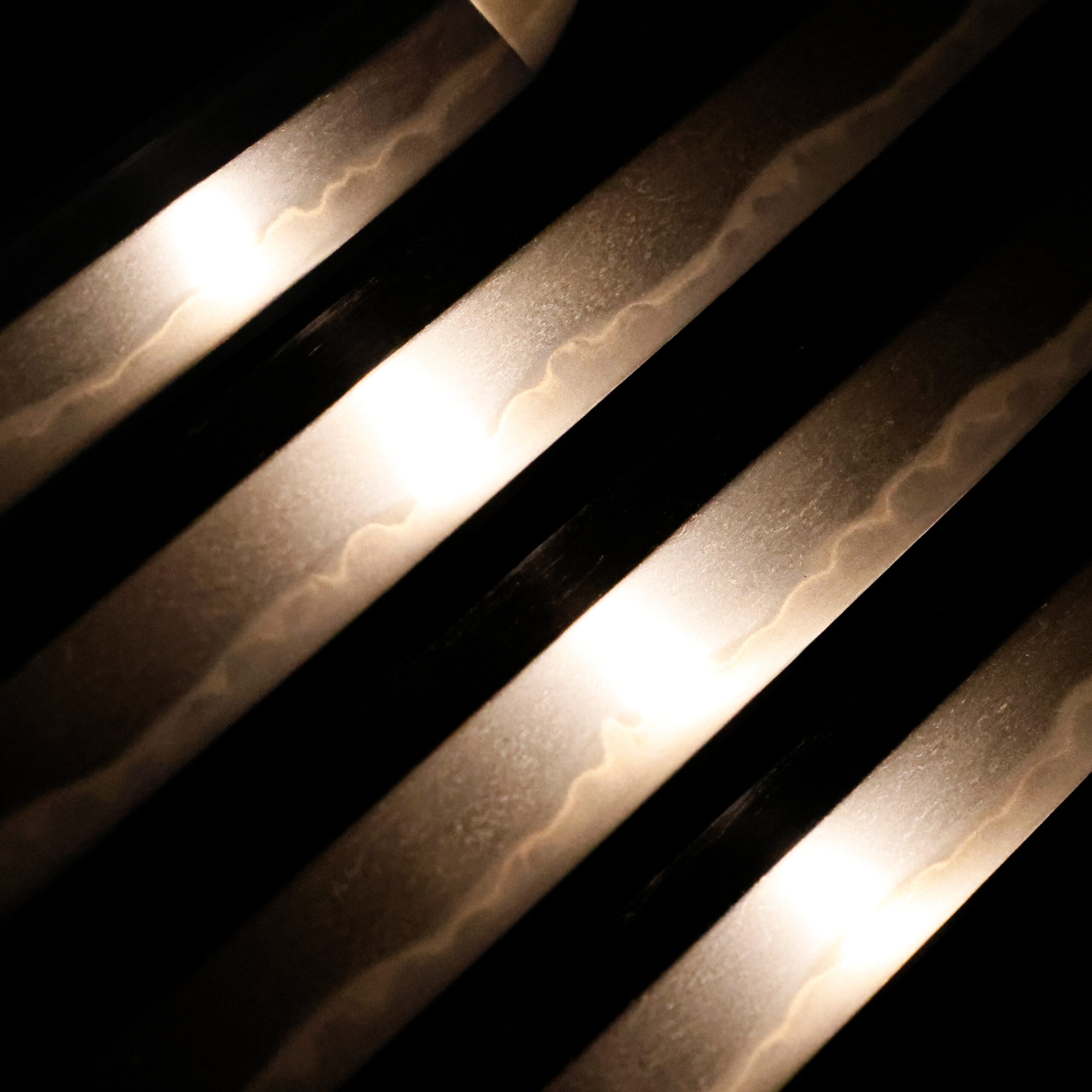


Kissaki: Kissaki is the tip of the Japanese sword.
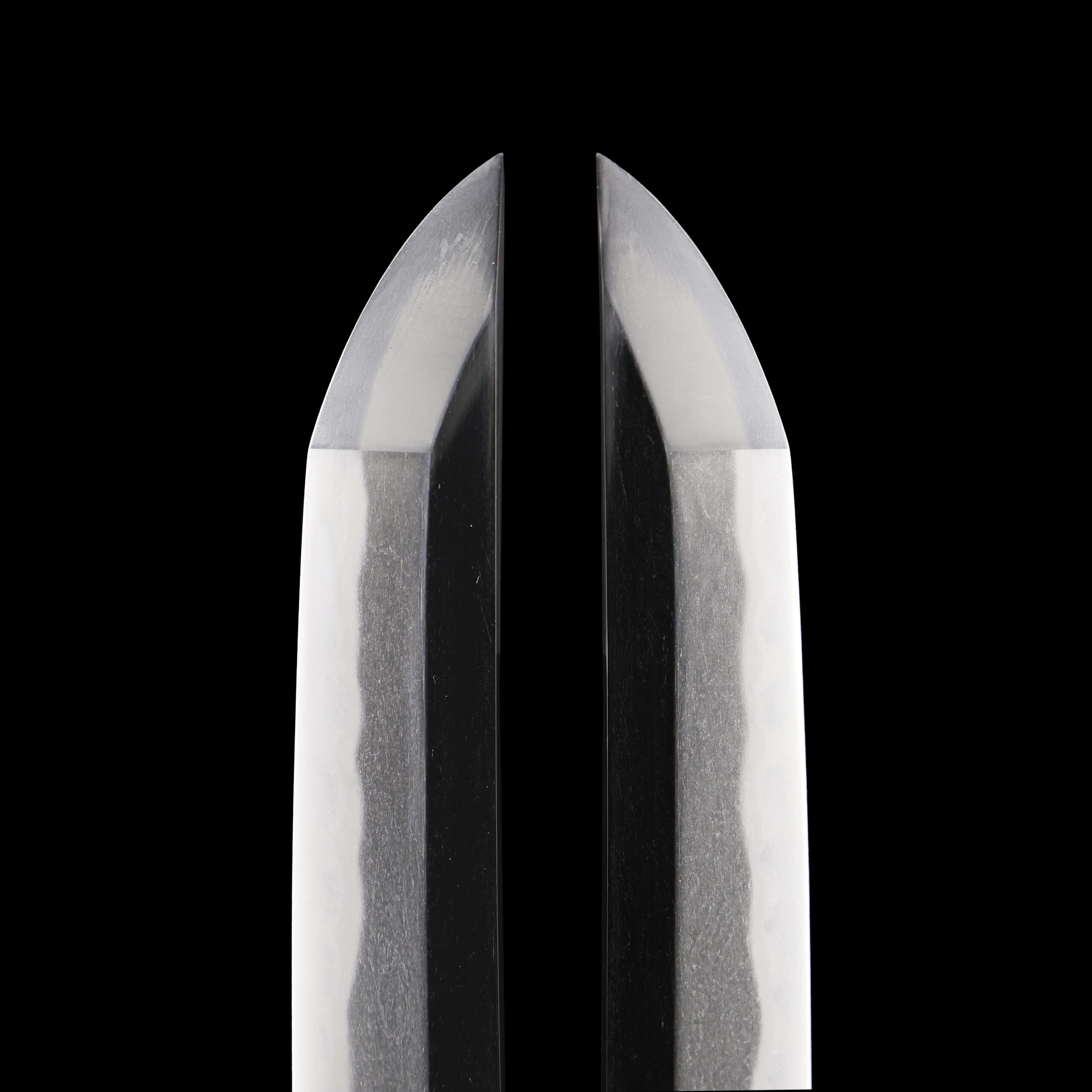
Nakago: Nakago is the tang of the Japanese sword.
Japanese swordsmiths left the black rust on the tang because it prevents red rust while the tang is in its handle. And the discoloration of the tang was created over time, and it is a great indicator for a Japanese sword specialist to estimate when the sword was forged.
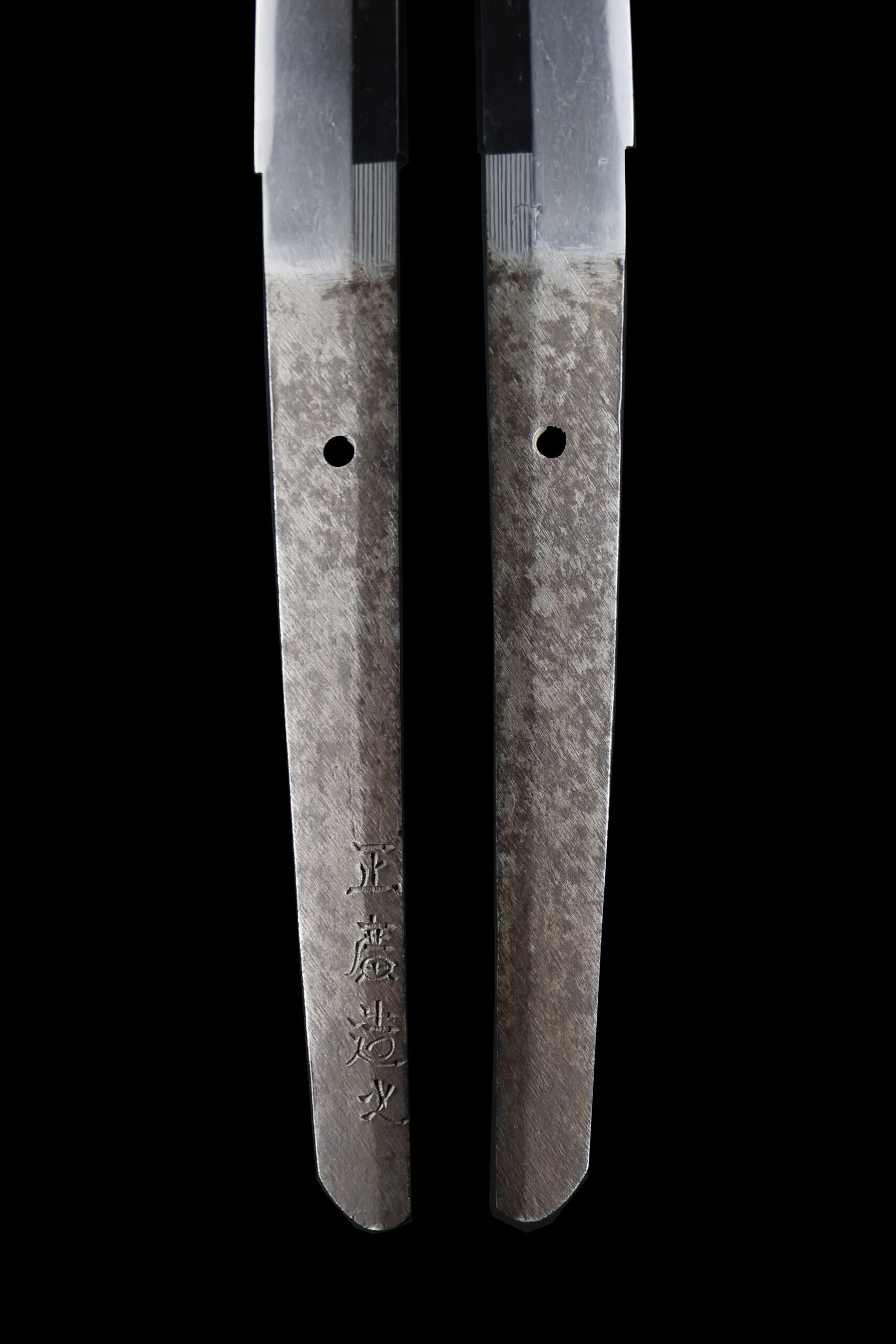
Koshirae: Koshirae is the mounting of the Japanese sword. There are several parts that consist of Koshirae such as Saya (Scabbard), Tsuka (Handle), Tsuba (Handguard).
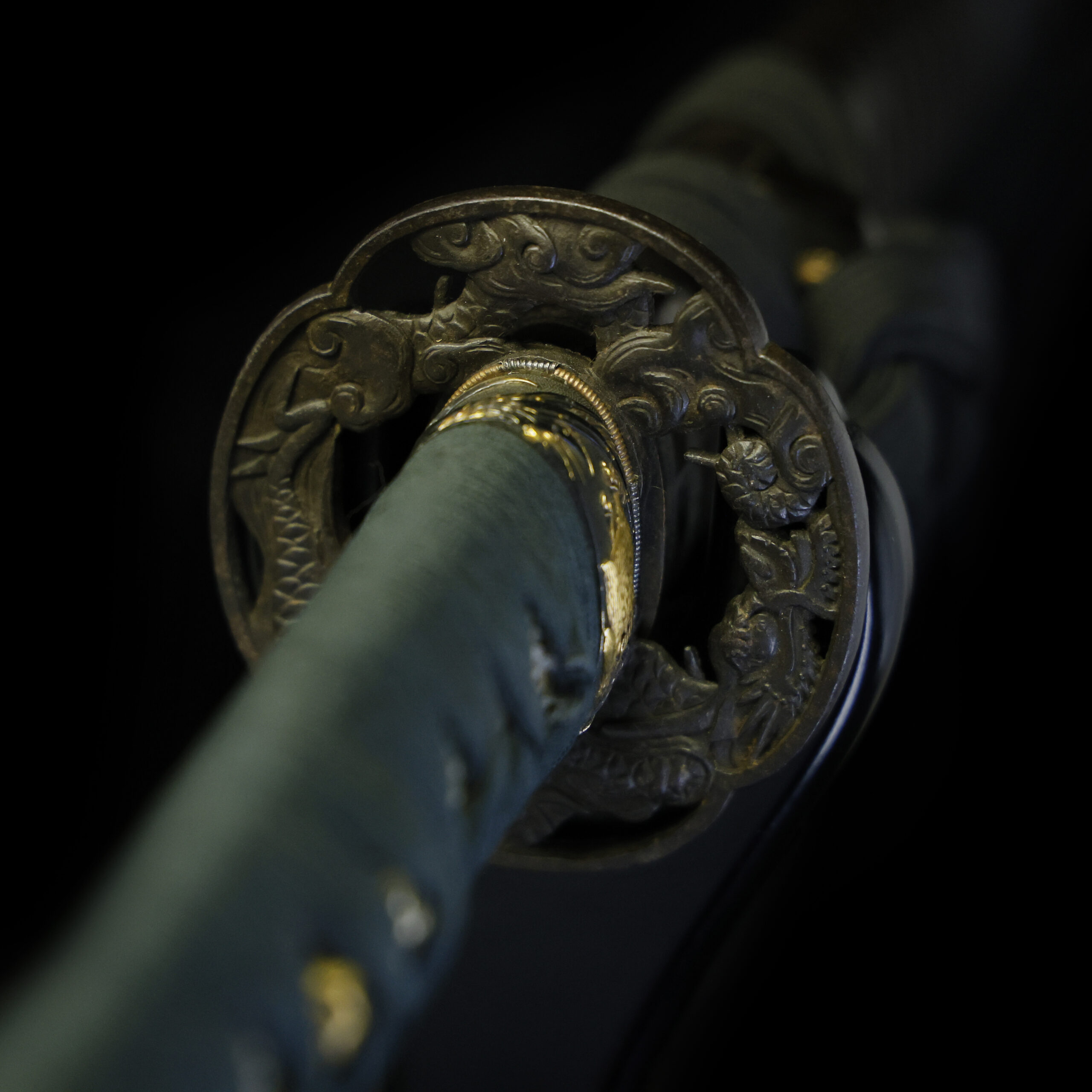
Fuchi-Kashira: A pair of matching sword fittings that cover the upper and bottom parts of its sword hilt.
This fuchi-kashira features a wild boar and a stalk of rice. In the Japanese zodiac, the boar (sign of the “i” year) is considered an auspicious animal that wards off misfortune and promotes good health. At the same time, especially in rural areas, the boar is also known as a nuisance that damages crops such as rice.
a rice plant (稲, ine) holds significant cultural and symbolic meaning in Japan. Rice has been a staple food and an essential part of Japanese life for centuries. It is not only a source of sustenance but also deeply intertwined with the country’s agricultural traditions and spiritual beliefs. In Japanese culture, rice is often associated with prosperity, abundance, and good fortune. It symbolizes the bounty of the land and the cycle of life, as rice is sown, grows, and is harvested with great care. Additionally, rice is a key element in many Shinto rituals, where it is seen as a sacred food, representing the connection between humans and the divine.
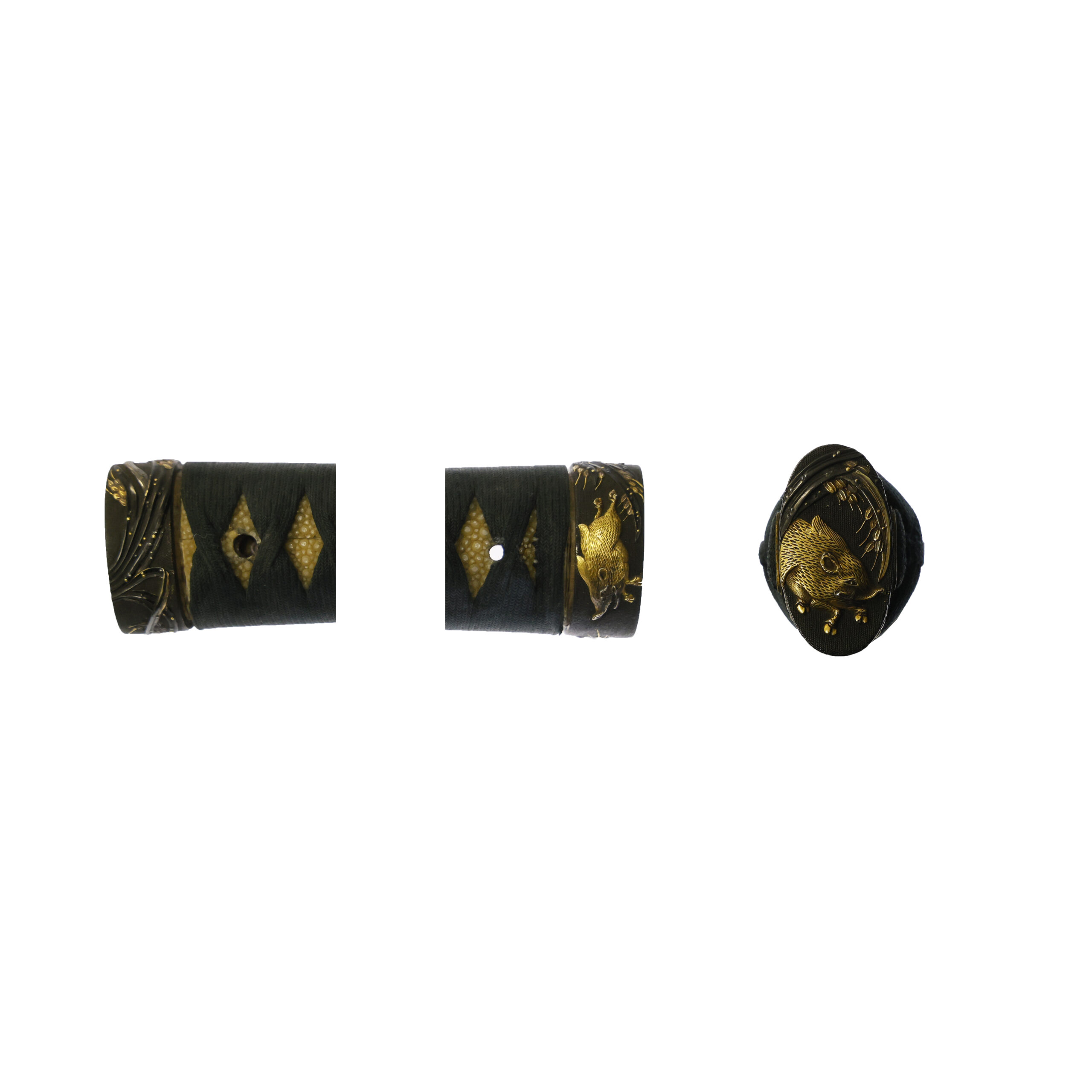
Tsuka and Menuki: Tsuka is the handle of the Japanese sword and Menuki is its decoration.
This menuki appears to depict cranes (鶴,tsuru), gracefully capturing a sense of movement and harmony. In Japanese culture, the crane is regarded as an auspicious bird, symbolizing longevity, marital harmony, and loyalty.
The presence of two cranes further emphasizes themes of partnership and balanced relationships. For samurai, such motifs were not merely decorative—they embodied ideals and values they aspired to uphold.
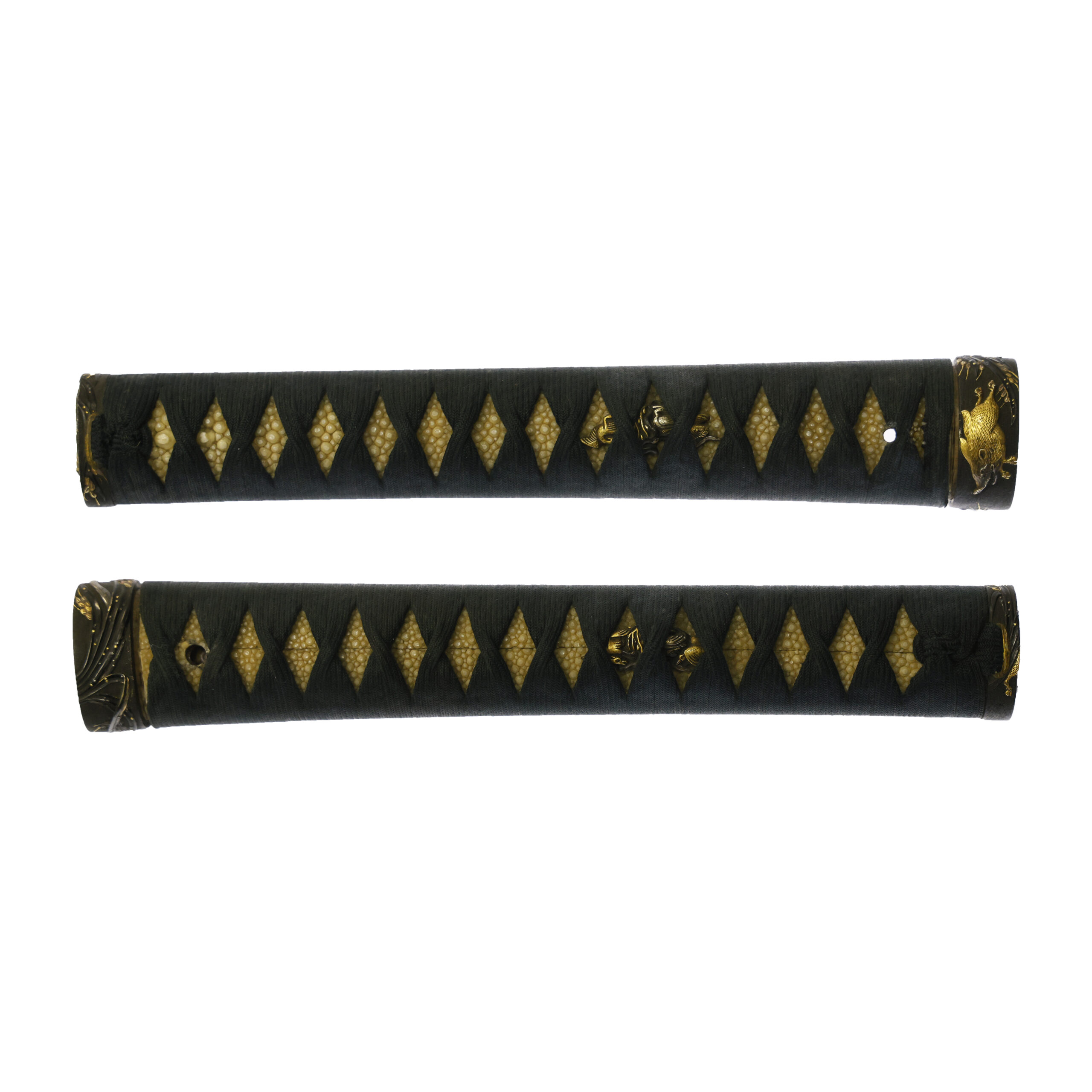

Tsuba and Habaki: Tsuba is the handguard for the Japanese Sword and Habaki is the equipment to make the blade not touch its scabbard inside. It prevents the blade from getting rusty and chipped.
This Tsuba is made of iron, and the motif of dragon (Ryu-Zu, 龍) is designed by using openwork technique (透かし彫り).
Initially, the dragon is an imaginary creature found in ancient Chinese traditions or myths. Furthermore, it is regarded as a symbolic beast of auspicious signs. Its body is likened to nine animals: antlers are deer, the head is a camel, eyes are demons, the neck is a snake, belly is Mizuchi (蛟, mythical animal in Japan which looks like a snake and have a horn and four legs), scales are fish, claws are falcons, palms are tigers, and ears are cows. It was thought that the dragon would reign at the top of all animals because of its odd-looking appearance.
In ancient China, the dragon pattern was used for emperors’ clothing so that people strictly defined its shape or even the number of nails. On the other hand, the dragon pattern does not have detailed rules to represent classes in Japan. However, still, it maintains its meaning as the all-purpose auspicious pattern.
Also, in Japan, there is a belief that worships dragon as a water god and is called Ryujin Shinkou (竜神信仰). Since rice cultivation flourished in this country, water is always an essential resource. Therefore, the dragon motif has been familiar to Japanese people since a long time ago.
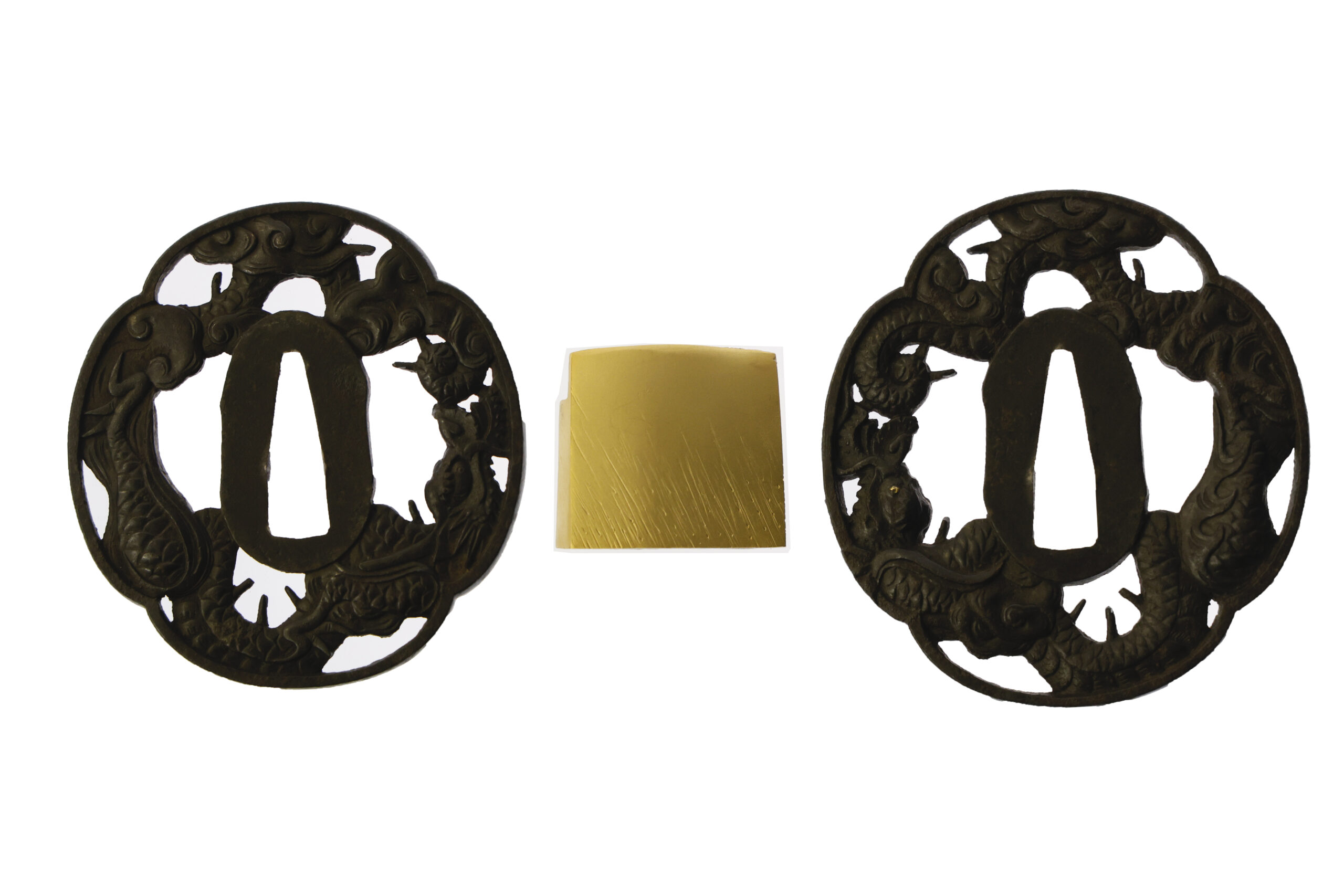
Saya: Saya is the scabbard for the Japanese sword.
This saya (scabbard) features a decorative lacquer technique known as Fuemaki-nuri (笛巻塗). The name literally means “flute-wrap lacquer” and refers to a method in which thin cords or strings are wrapped around the scabbard before being coated with multiple layers of lacquer. Once dried and polished, the surface reveals a textured, ridged pattern reminiscent of the wrapping on a traditional Japanese flute (fue, 笛).
At the kojiri (end cap) of the saya, a dragon is depicted—mirroring the design found on the tsuba (handguard). In Japanese culture, the dragon is a symbol of strength, protection, and spiritual power, often used in sword fittings to convey a sense of authority and mysticism.
*Please keep in mind that there are a couple of areas that has the trace of restoration.

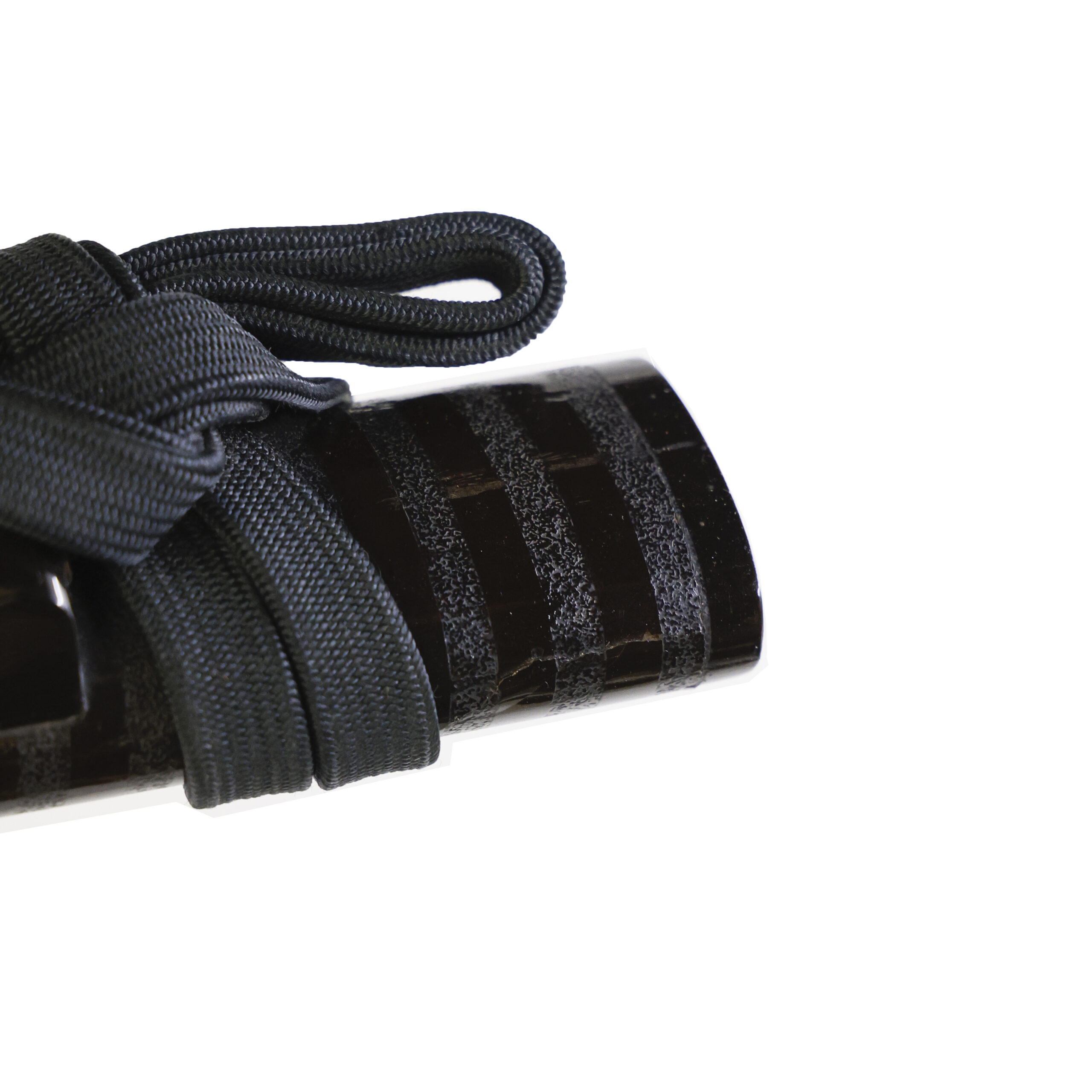
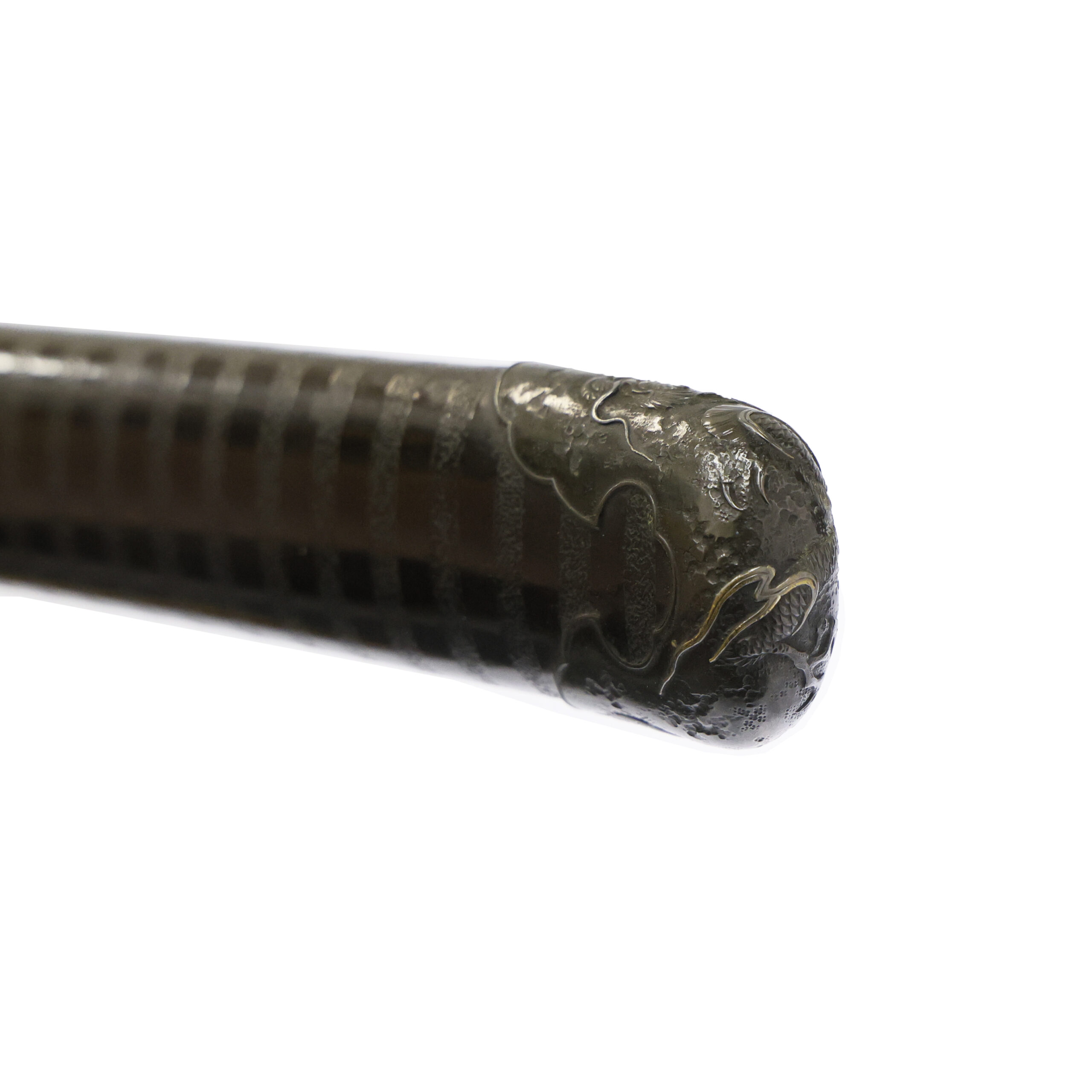
Authentication Paper: NBTHK Hozon Certificate for the blade (No.3032231)
NBTHK, also known as Nihon Bijutsu Touken Hozon Kyokai (the Society for the Preservation of the Japan Art Sword), is one of the oldest Japanese sword appraising organizations in modern-day Japan. They authenticated the blade on August 25th in the 5th year of Reiwa (2023). They appraised it as Hozon Touken, the blade worth preserving for Japanese society. The purchaser will receive this original certificate as well. We can also translate what is written into English and make a PDF file for your record if you request.
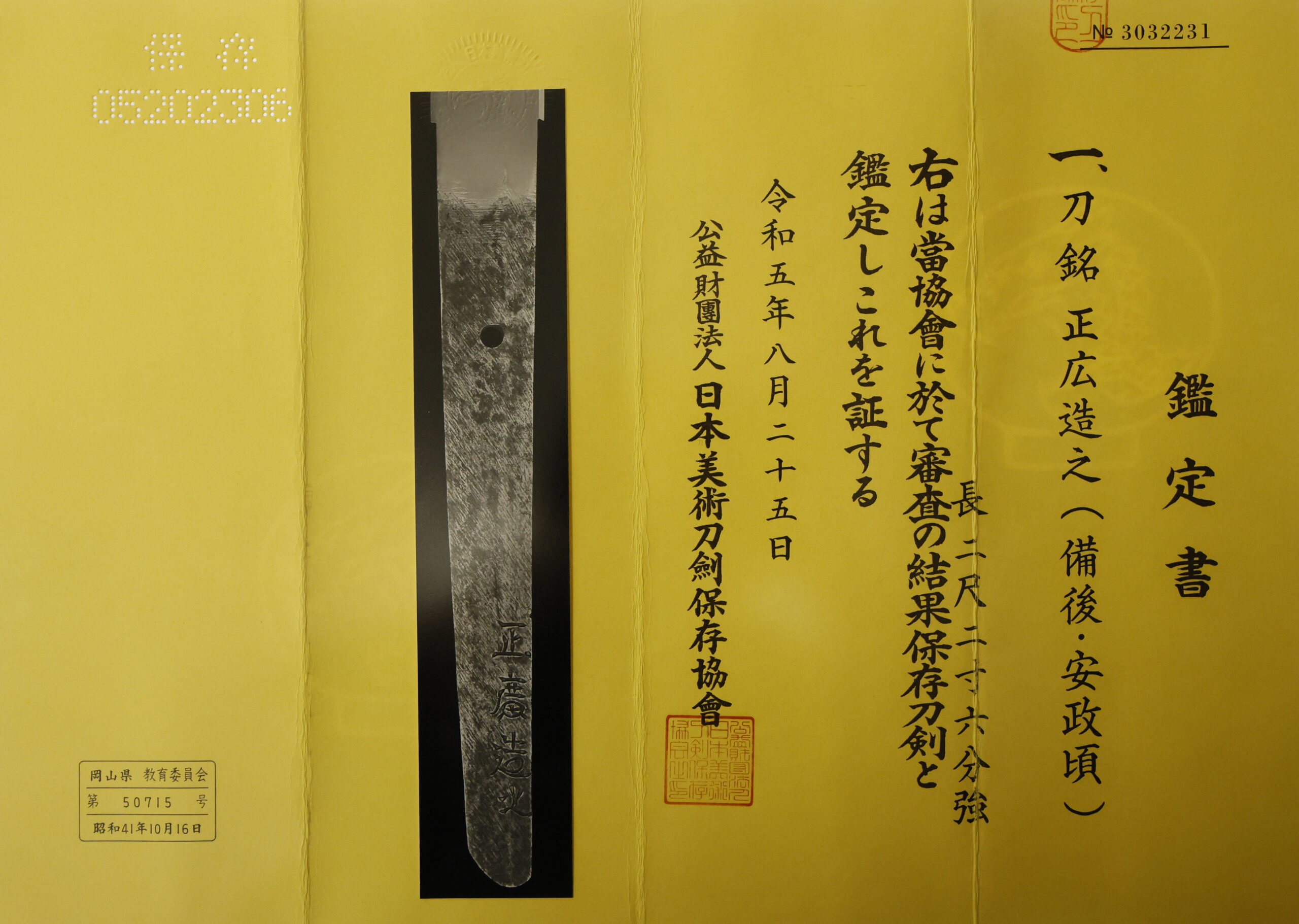
Registration Number: Okayama 50715
The Board of Education in Okayama issued a registration paper for this sword. It is called Jyu Token Rui Torokusho (銃刀剣類登録証). Bunkacho (The Agency for Cultural Affairs) acknowledges a Japanese sword with this paper as a work of art.
The sword needs to be traditionally hand-forged and made of Tamahagane carbon steel to be registered in the system. With this paper, its owner in Japan can legally own an authentic Japanese sword. Based on this registration number, we will apply for its export permit.
This paper will need to be returned to the board of education when the sword is being shipped abroad, but you can receive a copy of it. An English translation of this registration paper is available on request.
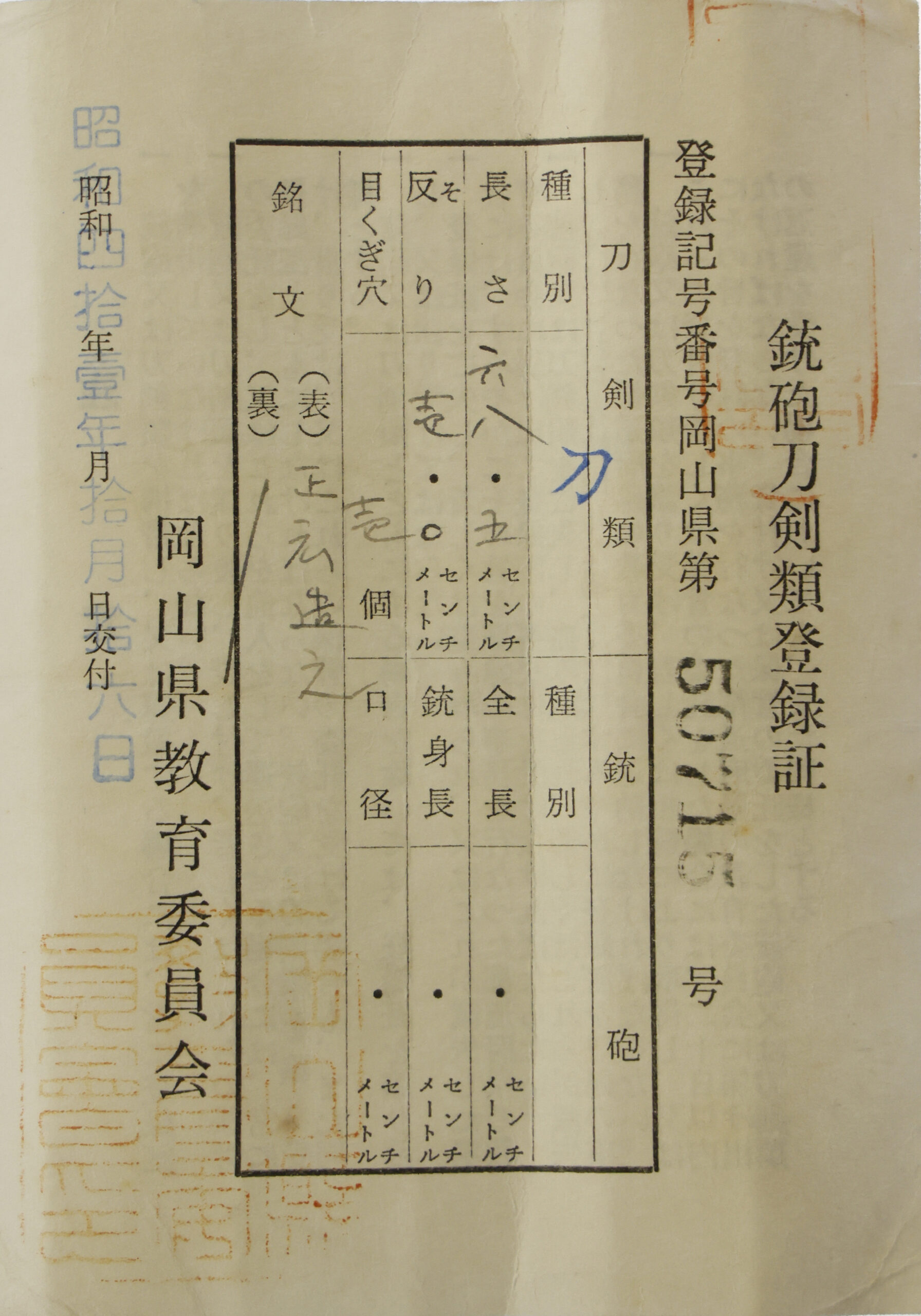
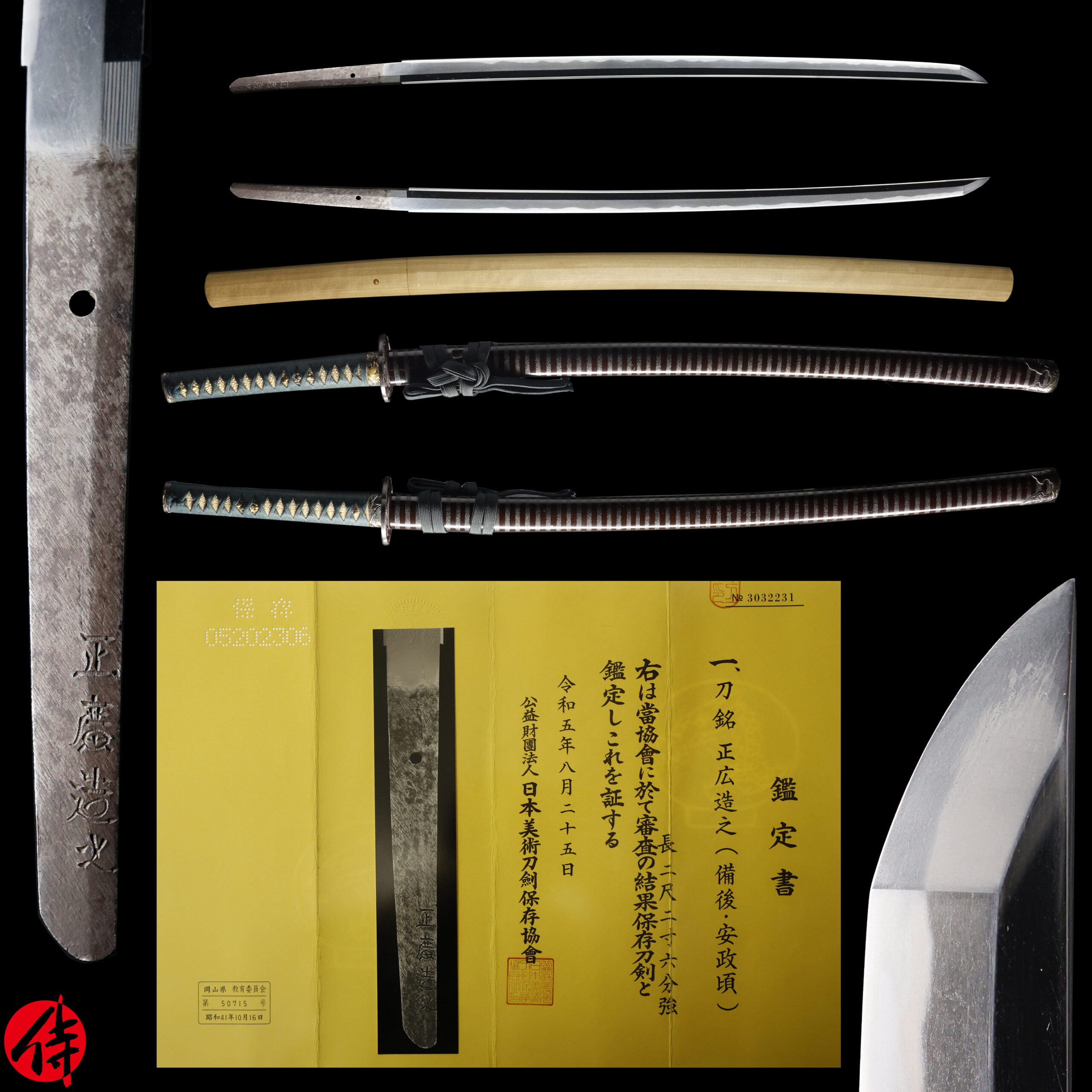
【About us】
Samurai Museum is located in Tokyo, Japan, exhibiting antique artifacts related to the Samurai history. Samurai Museum Shop is the place for those who are interested in Japanese culture and craftsmanship. We deal with antique Samurai swords/armor, traditional crafts made in Japan and so on.
【Japanese Sword& Export Process】
The Japanese swords we deal with are hand-forged edged swords made in Japan. It was made from the traditional carbon steel called TAMAHAGANE(玉鋼). Samurai Museum is familiar with the proper legal procedure for an antique/ authentic Japanese sword to be exported from Japan. We have sent more than 700 Japanese swords for the past few years (~2024) to amazing owners who appreciate its historical value.
Each Japanese sword is registered under the Agency for Cultural Affairs and the Board of Education in Japan. They issue a registration paper for each Japanese sword for its owner in Japan to legally possess it. The Japanese sword with its registration paper means it was traditionally hand-forged in Japan.
To legally export the sword from Japan to other countries, we will have to apply for its permit to the Agency for Cultural Affairs(Bunkacho) and return the original registration paper to the Board of Education. It normally takes around 2-4 weeks to receive this permit after submitting required documents. And we would like you to expect at least 1-1.5 months for your order to arrive at your given address after you ordered. For more detailed info, please click here.
It is allowed for residents in Japan to own authentic Japanese swords without a special license as long as they come with registration papers. Please feel free to contact us if you are a resident of Japan, whether temporarily or permanently. We will also assist you when you leave Japan and need to obtain the export permit.
【Payment Method】
We accept payment through Stripe (Credit card), PayPal, Apple Pay or ChromePay, all of which are secure payment methods. Also, you don’t need to make an account on Stripe for the checkout. If you prefer other payment method, please contact us. After confirming your payment, we will apply for an export permit. You may either pay in JPY, USD, AUD, CAD,EUR CHF or GBP. The price is set in Japanese Yen. Prices in other currencies are automatically calculated based on the latest exchange rate.

* If the amount is above 1 million JPY, Stripe or wire transfer will be the only options for payment.
【Shipping】
We have shipped authentic Japanese swords to the USA, Canada, Mexico, Germany , Belgium, France, Finland, UK, Hong Kong, Australia. If you don’t live in these countries and like to order, please contact us first before making a purchase. We offer Free International Shipping as long as we can send antique Japanese swords by EMS.
We normally ship by EMS(Express Mail Service) provided by Japan Post. We will send you a tracking number for your order as soon as we hand it to the post office. We will put 100 % insurance on the shipping document without any extra charge. Based on the total amount, there might be a duty tax or other fee for you to pay, depending on the countries. We use package cushioning to protect the item and put it in a PVC pipe, which is one of the most secure packages because of its durability.
It will normally takes 5-14 days for the item to arrive at your given address after we dispatch it. Time of delivery is estimated as accurately as possible by the carrier but does not take into account any delays beyond our control such as by inclement weather, post office holiday seasons.
* If you live in Australia and like to purchase an authentic Japanese sword, please click here to know the detail.
* If you live in the UK and like to purchase an authentic Japanese sword, please contact us first and click here to know the detail.

【Review】
Here is one of the reviews we received from a customer who purchased an authentic Japanese sword from us. For more reviews, please click here.
“My experience overall with the whole process was wonderful. I had many questions about the history and process to purchase these treasures. All my questions were answered very timely and complete. The staff is very knowledgeable and very well versed if any questions do arise.”
【How to make sure the condition】
Please keep in mind that what you are going to purchase is an antique item. We uploaded high resolution photos for you to check its condition thoroughly. If you like to see more photos with different angles, please feel free to contact us. We will be happy to send them to you so that you can make informed decision. It is essential for us to know that you are happy with your choice of a sword. and we are prepared to use the best of our ability to serve you.
【How To Contact Us】
Please contact us through email, Facebook Messenger or Live Chat if you have any questions. You can find each icon on the right side of the website. Please click one of them to reach us. We will reply to you within 1-2 business days.
【The Art of Nihonto (Japanese Sword)】
Samurai’s history is a profound, eloquent legacy of ancient Japanese warriors in which millions of people worldwide are being fascinated. If you like to find out the art of Nihonto, please click here.
【A Guide to Japanese Sword Maintenance】
After acquiring an genuine Japanese sword, it is also important to know how to take good care of it. Here is the special video for you. Mr. Paul Martin, Japanese sword expert, shows you how to give proper maintenance to your sword. By mastering how to clean the Japanese sword, its aesthetic beauty will last forever.
When you purchase a Japanese sword from us, you can get a Free Japanese sword maintenance kit. It comes with four tools(Choji Oil, Uchiko Whetstone Powder, Peg remover, Oil Applicator). By watching the video instruction above , you can enjoy learning how to maintain your Japanese sword while appreciating it. If you have any difficulty assembling the sword or cleaning the blade, you can feel free to contact us.
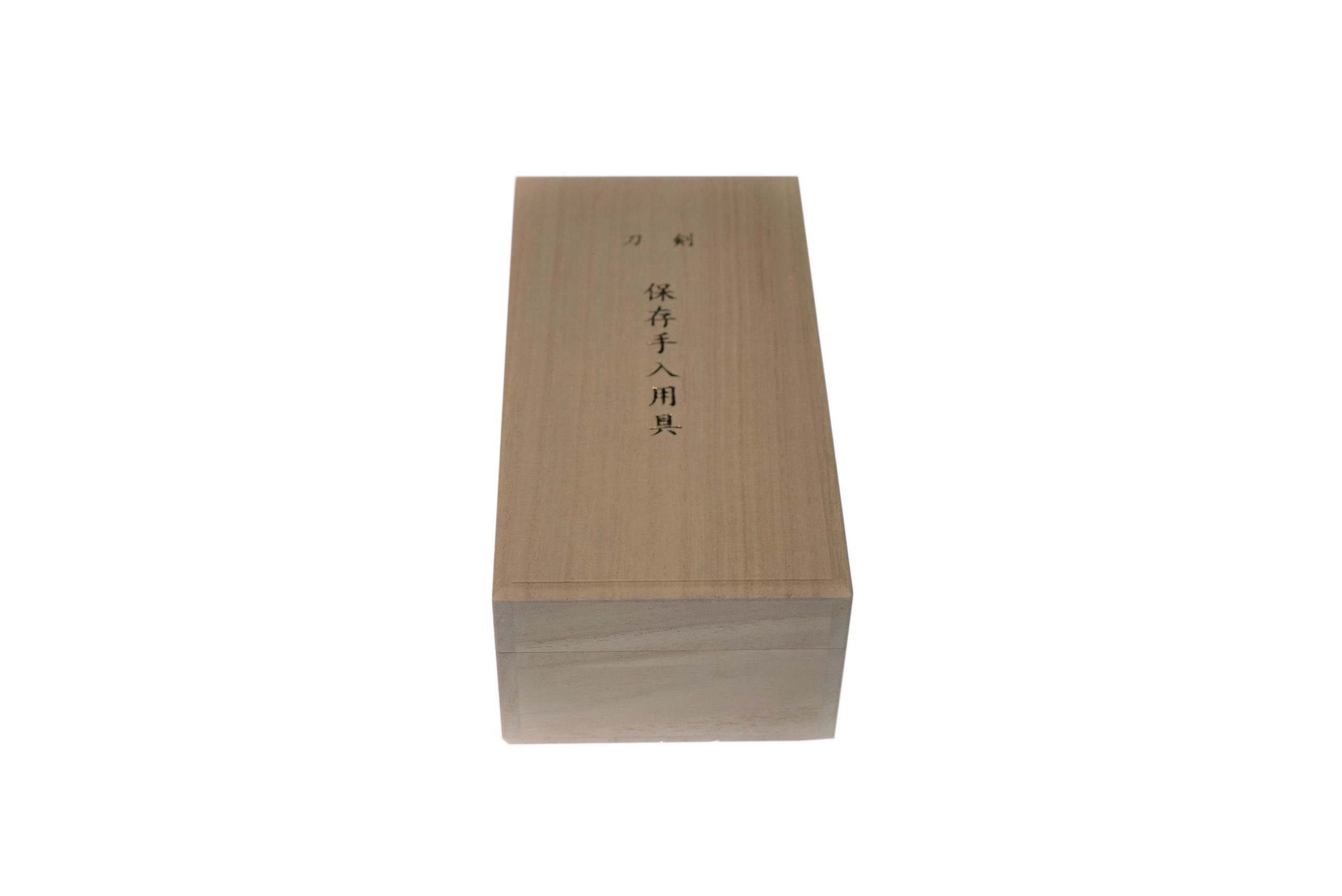
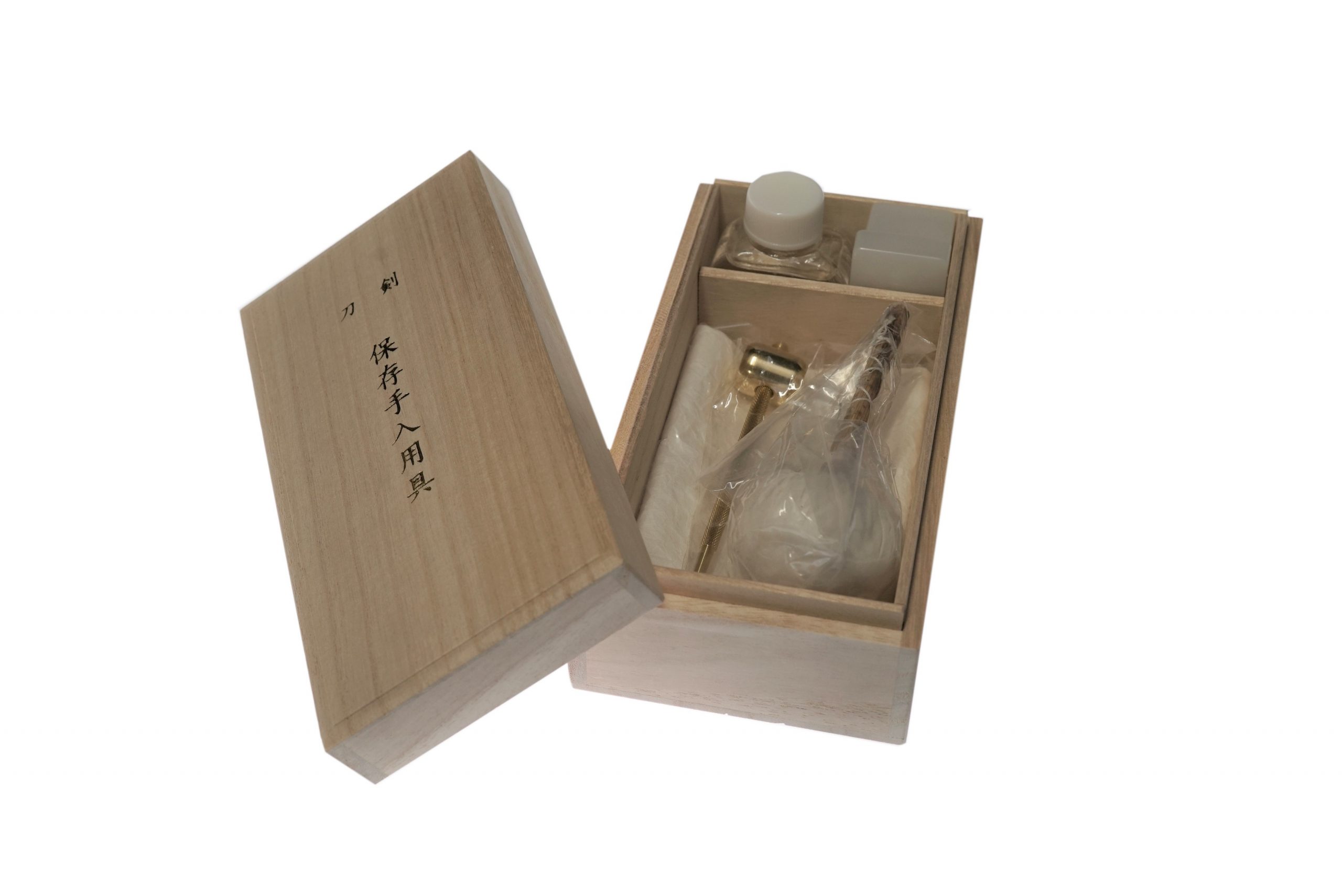
MORE ANTIQUE JAPANESE SWORD FOR SALE
SWORDS WITHOUT CERTIFICATES FOR SALE
LEARN JAPANESE SWORD TERMINOLOGY
Thank you for reading all the information on the page. If you have any difficulty choosing the right Japanese sword for you, we will be more than happy to help you find the one that speaks to you the most. Please feel free to contact us.
